Paul Bishop's Blog, page 30
January 4, 2017
THE CONTINUING LEGACY OF DICK FRANCIS
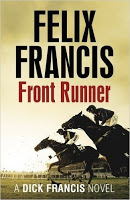
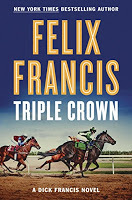
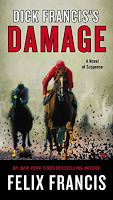 THE CONTINUING LEGACY OF DICK FRANCIS
THE CONTINUING LEGACY OF DICK FRANCIS
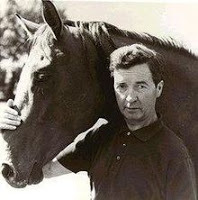 For over forty years, I’ve waited eagerly for each new Dick Francis novel to appear and immediately top my tottering to be read pile. Not only do I buy each new Francis novel on publication day, but I always pay a premium for the British first editions because of their far superior cover art, higher quality paper, and tighter binding. I still buy the America first editions, but do so while shaking my head over their generic look and feel.
For over forty years, I’ve waited eagerly for each new Dick Francis novel to appear and immediately top my tottering to be read pile. Not only do I buy each new Francis novel on publication day, but I always pay a premium for the British first editions because of their far superior cover art, higher quality paper, and tighter binding. I still buy the America first editions, but do so while shaking my head over their generic look and feel.
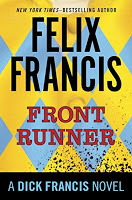 Recently, I was speaking with the mystery’s most knowledgeable collector and genre maven—a man whose opinion I highly respect. He told me Dick Francis appears to have fallen out of favor with collectors. Apparently, my Dick Francis first editions—signed or unsigned—are currently not worth diddly. While this is unfortunate, it is a moot point as I have no plans to dispose of my extensive Francis collection.
Recently, I was speaking with the mystery’s most knowledgeable collector and genre maven—a man whose opinion I highly respect. He told me Dick Francis appears to have fallen out of favor with collectors. Apparently, my Dick Francis first editions—signed or unsigned—are currently not worth diddly. While this is unfortunate, it is a moot point as I have no plans to dispose of my extensive Francis collection.
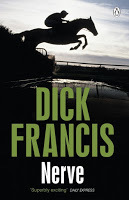 Extensive is the operative word in the last sentence. Aside from British and American first editions, I have several different audio editions of each book, and copies of the books and magazines containing the original appearances of the handful of Dick Francis short stories. Then there are the VHS and DVD collections of all of the Francis television adaptations, plus the only feature film based on a Francis novel, Dead Cert. My collection further contains press release information for both the books and the TV adaptations, posters and lobby cards for the Dead Cert movie, a bootleg VHS tape of an unauthorized Russian television adaptation of Dead Cert, and several three-ring binders filled with other Francis ephemera.
Extensive is the operative word in the last sentence. Aside from British and American first editions, I have several different audio editions of each book, and copies of the books and magazines containing the original appearances of the handful of Dick Francis short stories. Then there are the VHS and DVD collections of all of the Francis television adaptations, plus the only feature film based on a Francis novel, Dead Cert. My collection further contains press release information for both the books and the TV adaptations, posters and lobby cards for the Dead Cert movie, a bootleg VHS tape of an unauthorized Russian television adaptation of Dead Cert, and several three-ring binders filled with other Francis ephemera.
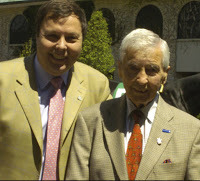 I was fortunate to meet Francis and his wife Mary on several occasions and found them to be charming, good-natured, and unassuming. The fact Mary did quite a bit of work on the books while Dick got the credit on the covers, was an open secret to those familiar with the situation. The Francis sons, Merrick and Felix, also got into the act on occasion. "I designed the bomb that blew up the plane in Rat Race when I was a 17 year old physics student,” Felix explains. “I wrote the computer program in Twice Shy, which I thought was really cutting edge. but is now so out of date." Felix’s experiences as an international marksman would come into play in both Shattered (2000) and Under Orders (2006). Felix eventually left the academic world—with which he still maintains strong ties—to handle his father’s affairs and manage the Dick Francis brand. When Mary Francis passed away, Francis’ English and American publishers (Michael Joseph and Putnam respectively) began to pave the way for a formal succession of the novels’ authorship from Dick Francis to his son Felix. The tradition of a Francis for Christmas, supposedly an edict from Queen Elizabeth herself, had to continue—As, I’m sure, did the publishers’ revenues.
I was fortunate to meet Francis and his wife Mary on several occasions and found them to be charming, good-natured, and unassuming. The fact Mary did quite a bit of work on the books while Dick got the credit on the covers, was an open secret to those familiar with the situation. The Francis sons, Merrick and Felix, also got into the act on occasion. "I designed the bomb that blew up the plane in Rat Race when I was a 17 year old physics student,” Felix explains. “I wrote the computer program in Twice Shy, which I thought was really cutting edge. but is now so out of date." Felix’s experiences as an international marksman would come into play in both Shattered (2000) and Under Orders (2006). Felix eventually left the academic world—with which he still maintains strong ties—to handle his father’s affairs and manage the Dick Francis brand. When Mary Francis passed away, Francis’ English and American publishers (Michael Joseph and Putnam respectively) began to pave the way for a formal succession of the novels’ authorship from Dick Francis to his son Felix. The tradition of a Francis for Christmas, supposedly an edict from Queen Elizabeth herself, had to continue—As, I’m sure, did the publishers’ revenues.
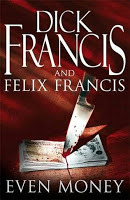 After thirty-nine novels, two non-fiction tomes, and a collection of short stories, the next four novels were bylined Dick Francis in large type at the top of the covers with And Felix Francis in smaller type at the bottom. Once Francis himself passed away, there was still a Francis for Christmas, only now Felix was credited as the sole author of the next six successful Dick Francis branded tales of horseracing mayhem and mystery—with no finish line yet in sight. Francis himself rarely used a main character for more than one book. He believed a new book needed a new main character as it made filling the pages easier if there was a different hero to describe and develop. He also felt using a new hero in each story made it easy for the books to be read in no specific order.
After thirty-nine novels, two non-fiction tomes, and a collection of short stories, the next four novels were bylined Dick Francis in large type at the top of the covers with And Felix Francis in smaller type at the bottom. Once Francis himself passed away, there was still a Francis for Christmas, only now Felix was credited as the sole author of the next six successful Dick Francis branded tales of horseracing mayhem and mystery—with no finish line yet in sight. Francis himself rarely used a main character for more than one book. He believed a new book needed a new main character as it made filling the pages easier if there was a different hero to describe and develop. He also felt using a new hero in each story made it easy for the books to be read in no specific order.
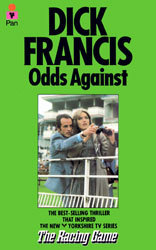 Francis followed this rule literally in name only and with two exceptions. Anyone who has ever read a Francis book would recognize the same hero templet in each succeeding volume. The character may have a different occupation—from race pilot to horse transport driver to official British Horse Racing Authority agent—a different girlfriend, and a different physical appearance, but the first person voice of the character never changed, nor did the likeable persona, dogged determination, and quick thinking characteristics, which were the touchstones of every Francis hero. This is not a criticism. In many ways, this approach is brilliant because it creates the perfect mix of the comfortable and expected with the allure of new and vibrant backstories and professions, all played against the ever present world of horses and racing.
Francis followed this rule literally in name only and with two exceptions. Anyone who has ever read a Francis book would recognize the same hero templet in each succeeding volume. The character may have a different occupation—from race pilot to horse transport driver to official British Horse Racing Authority agent—a different girlfriend, and a different physical appearance, but the first person voice of the character never changed, nor did the likeable persona, dogged determination, and quick thinking characteristics, which were the touchstones of every Francis hero. This is not a criticism. In many ways, this approach is brilliant because it creates the perfect mix of the comfortable and expected with the allure of new and vibrant backstories and professions, all played against the ever present world of horses and racing.
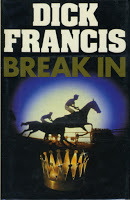 The two exceptions to Francis’ general rule were Sid Halley and Kit Fielding. Appearing first in Break In (1985), Fielding saw a return to action the following year in Bolt (1986) as Francis was concurrently writing the official biography of Lester Piggott and did not have the time to research a new lead character. Sid Halley, however, was a different story.
The two exceptions to Francis’ general rule were Sid Halley and Kit Fielding. Appearing first in Break In (1985), Fielding saw a return to action the following year in Bolt (1986) as Francis was concurrently writing the official biography of Lester Piggott and did not have the time to research a new lead character. Sid Halley, however, was a different story.
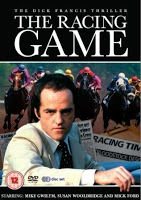 In 1979, the first Sid Halley novel was adapted for the debut of six episodes comprising the television series, The Racing Game. While the other five episodes were original stories created by other writers, Sid Halley remained as the series protagonist. Francis was extremely impressed by the performance of actor Mike Gwilym, who portrayed Sid Halley in the series. Francis felt Gwilym so completely embodied the character, he was inspired to write the second Halley novel, Whip Hand(1979), dedicating it to Gwilym. The novel was so successful, Halley became a fan favorite and Francis brought the character back again in Come to Grief (1995) and Under Orders (2006).
In 1979, the first Sid Halley novel was adapted for the debut of six episodes comprising the television series, The Racing Game. While the other five episodes were original stories created by other writers, Sid Halley remained as the series protagonist. Francis was extremely impressed by the performance of actor Mike Gwilym, who portrayed Sid Halley in the series. Francis felt Gwilym so completely embodied the character, he was inspired to write the second Halley novel, Whip Hand(1979), dedicating it to Gwilym. The novel was so successful, Halley became a fan favorite and Francis brought the character back again in Come to Grief (1995) and Under Orders (2006).
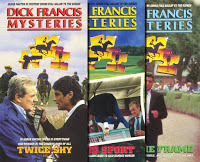 NOTE: In 1989 there were also three made for TV films adapting Francis’ novels Blood Sport (1967), In the Frame (1976), and Twice Shy (1981). The films replaced the different heroes from all three books with Ian McShane starring as David Cleveland, a character used only once by Francis, in the novel Slayride (1973).
The popularity of Sid Halley was augmented by his being the perfect Francis style hero—intelligent, tormented, and driven. A top jockey, Halley’s hand was crushed in a racing fall when a fall a horse stepped directly on his left palm. As the hand remained mostly useless even after a series of operations, the injury effectively ended his racing career.
NOTE: In 1989 there were also three made for TV films adapting Francis’ novels Blood Sport (1967), In the Frame (1976), and Twice Shy (1981). The films replaced the different heroes from all three books with Ian McShane starring as David Cleveland, a character used only once by Francis, in the novel Slayride (1973).
The popularity of Sid Halley was augmented by his being the perfect Francis style hero—intelligent, tormented, and driven. A top jockey, Halley’s hand was crushed in a racing fall when a fall a horse stepped directly on his left palm. As the hand remained mostly useless even after a series of operations, the injury effectively ended his racing career.
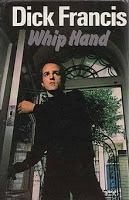 Unable to ride, Halley reluctantly takes a job as a private investigator for Hunt Radnor Associates, a large security firm with strong ties to the horseracing industry. Filled with self-pity over the hand injury, which cost him his racing career and his wife, he sleepwalks through life until a series of unexplained racetrack accidents peak his interest. In the course of the case, he discovers has an affinity for being a detective. However, this personal breakthrough comes at a high cost when the villain of the piece damages the injured hand even further, resulting in its amputation. Odds Againstearned Francis his first nomination for an MWA Edgar Award for Best Novel. The return of Sid Halley in Whip Hand won both the MWA Edgar and the CWA Gold Dagger for Best Novel, a double down share only with John le Carré’s The Spy Who Came In From The Cold. The third Halley novel, Come to Grief, also won an Edgar, making Halley the only detective-hero in fiction to be headline two Best Novel Edgars.
Unable to ride, Halley reluctantly takes a job as a private investigator for Hunt Radnor Associates, a large security firm with strong ties to the horseracing industry. Filled with self-pity over the hand injury, which cost him his racing career and his wife, he sleepwalks through life until a series of unexplained racetrack accidents peak his interest. In the course of the case, he discovers has an affinity for being a detective. However, this personal breakthrough comes at a high cost when the villain of the piece damages the injured hand even further, resulting in its amputation. Odds Againstearned Francis his first nomination for an MWA Edgar Award for Best Novel. The return of Sid Halley in Whip Hand won both the MWA Edgar and the CWA Gold Dagger for Best Novel, a double down share only with John le Carré’s The Spy Who Came In From The Cold. The third Halley novel, Come to Grief, also won an Edgar, making Halley the only detective-hero in fiction to be headline two Best Novel Edgars.
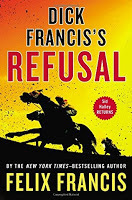 In 2013, in his third solo outing, Felix Francis returned to his father’s most popular character in Dick Francis’ Refusal. Now 47 years old, Halley has a six-year-old daughter and has given up detective work. However, to protect his family from a series of violent threats, he must reignite his long dormant detective skills. In interviews, Felix Francis has stated, I didn’t actually decide to follow in my father’s footsteps. It was all a bit of an accident. My father’s literary agent approached me and said that, after five years of no new Dick Francis novel [2001—2006], people were forgetting and my father’s backlist would soon go out of print. What was needed was a new novel to stimulate interest. By this time my father was 85 and my mother, who had worked closely with my father on the novels, had died. I told the agent that there was no chance of a new novel. He then asked if I, as my father’s manager, would give my permission for him to approach an established and well known crime writer to write a new ‘Dick Francis novel‘. I replied that, before he asked anyone else, I would like to have a go. “Write two chapters,” the agent said. “And then we’ll see.” I suspect he thought that he would then get my permission to ask the established writer. I wrote the two chapters and, as they say, the rest is history. The agent told me to get on and finish the book, and I’ve been a full-time writer ever since...
In 2013, in his third solo outing, Felix Francis returned to his father’s most popular character in Dick Francis’ Refusal. Now 47 years old, Halley has a six-year-old daughter and has given up detective work. However, to protect his family from a series of violent threats, he must reignite his long dormant detective skills. In interviews, Felix Francis has stated, I didn’t actually decide to follow in my father’s footsteps. It was all a bit of an accident. My father’s literary agent approached me and said that, after five years of no new Dick Francis novel [2001—2006], people were forgetting and my father’s backlist would soon go out of print. What was needed was a new novel to stimulate interest. By this time my father was 85 and my mother, who had worked closely with my father on the novels, had died. I told the agent that there was no chance of a new novel. He then asked if I, as my father’s manager, would give my permission for him to approach an established and well known crime writer to write a new ‘Dick Francis novel‘. I replied that, before he asked anyone else, I would like to have a go. “Write two chapters,” the agent said. “And then we’ll see.” I suspect he thought that he would then get my permission to ask the established writer. I wrote the two chapters and, as they say, the rest is history. The agent told me to get on and finish the book, and I’ve been a full-time writer ever since...
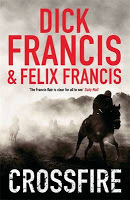 After four novels under his father’s tutelage—Dead Heat (2007), Silks (2008), Even Money(2009), and Crossfire (2010)—Dick Francis’ Gamble, published in September 2011, retained the Dick Francis brand, but was Felix Francis’ first solo outing. The idea of a recurring hero apparently appealed to Felix Francis. Following the return of Sid Halley in Dick Francis’ Refusal, Felix Francis’ next novel, Dick Francis’Damage (2014), introduced British Horseracing Authority agent Jefferson JeffHinkley.
After four novels under his father’s tutelage—Dead Heat (2007), Silks (2008), Even Money(2009), and Crossfire (2010)—Dick Francis’ Gamble, published in September 2011, retained the Dick Francis brand, but was Felix Francis’ first solo outing. The idea of a recurring hero apparently appealed to Felix Francis. Following the return of Sid Halley in Dick Francis’ Refusal, Felix Francis’ next novel, Dick Francis’Damage (2014), introduced British Horseracing Authority agent Jefferson JeffHinkley.
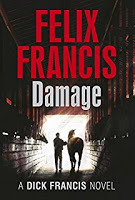 A highly trained investigator, Hinkley was as an officer in the British Army Intelligence Corps. He served several tours of duty in Afghanistan, and is not fazed by situations of intense danger where he has to rely solely on his wits to extricate himself from trouble. He is also a master of disguise. Like all Francis heroes, he is organized, loyal, and courageous—stubbornly refusing to be put off the scent of his quarry despite threats, beatings, stabbings, and bombings.
A highly trained investigator, Hinkley was as an officer in the British Army Intelligence Corps. He served several tours of duty in Afghanistan, and is not fazed by situations of intense danger where he has to rely solely on his wits to extricate himself from trouble. He is also a master of disguise. Like all Francis heroes, he is organized, loyal, and courageous—stubbornly refusing to be put off the scent of his quarry despite threats, beatings, stabbings, and bombings.
 My editor and publisher were keen to have Jeff back and I believed it was the time, maybe, to write a series...I have certainly found the experience interesting, if not always easy. The primary difficulty being the need to create a story that can be read in isolation from the others in the series without the need for prior knowledge from previously written works...To be a success, it is essential people care about the protagonist. They don’t have to necessarily like him, but they do have to care what happens to him and also how the story unfolds around him...
My editor and publisher were keen to have Jeff back and I believed it was the time, maybe, to write a series...I have certainly found the experience interesting, if not always easy. The primary difficulty being the need to create a story that can be read in isolation from the others in the series without the need for prior knowledge from previously written works...To be a success, it is essential people care about the protagonist. They don’t have to necessarily like him, but they do have to care what happens to him and also how the story unfolds around him...
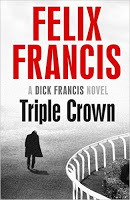 As a result, Felix Francis immediately brought Hinkley back in Front Runner: A Dick Francis Novel(2015), unearthing some unresolved issues from Dick Francis’ Damage, to challenge his returning hero. Hinkley’s adventures also continue in Felix Francis’ latest novel, Triple Crown: A Dick Francis Novel (2016)—which takes Hinkley to America and the perils of the Kentucky Derby and the other glamorous races comprising American racing’s biggest prize. Like Sid Halley before him, Jeff Hinkley is extremely likeable. Felix Francis has captured his father’s skill at using the first person narrative of his tales to make the reader feel like a close friend along for the investigative ride. For me, Felix Francis has refreshed the brand. As a self-admitted Dick Francis fanatic, I’m delighted to see the stories continuing in a style and quality of which both Dick and Mary Francis would be proud. DICK FRANCIS’ DAMAGE
As a result, Felix Francis immediately brought Hinkley back in Front Runner: A Dick Francis Novel(2015), unearthing some unresolved issues from Dick Francis’ Damage, to challenge his returning hero. Hinkley’s adventures also continue in Felix Francis’ latest novel, Triple Crown: A Dick Francis Novel (2016)—which takes Hinkley to America and the perils of the Kentucky Derby and the other glamorous races comprising American racing’s biggest prize. Like Sid Halley before him, Jeff Hinkley is extremely likeable. Felix Francis has captured his father’s skill at using the first person narrative of his tales to make the reader feel like a close friend along for the investigative ride. For me, Felix Francis has refreshed the brand. As a self-admitted Dick Francis fanatic, I’m delighted to see the stories continuing in a style and quality of which both Dick and Mary Francis would be proud. DICK FRANCIS’ DAMAGE
 Undercover investigator Jeff Hinkley is assigned by the British Horseracing Authority to look into the activities of a suspicious racehorse trainer, but as he’s tailing his quarry through the Cheltenham Racing Festival, the last thing he expects to witness is a gruesome murder. Could it have something to do with the reason the trainer was banned in the first place—the administration of illegal drugs to his horses? Then many more horses test positive for prohibited stimulants, and someone starts making demands, threatening to completely destroy the integrity of the racing industry. In order to limit the damage to the sport, it’s critical that Jeff find the perpetrator...but he’ll soon learn he’s up against someone who will stop at nothing to prevail. FRONT RUNNER: A DICK FRANCIS NOVEL
Undercover investigator Jeff Hinkley is assigned by the British Horseracing Authority to look into the activities of a suspicious racehorse trainer, but as he’s tailing his quarry through the Cheltenham Racing Festival, the last thing he expects to witness is a gruesome murder. Could it have something to do with the reason the trainer was banned in the first place—the administration of illegal drugs to his horses? Then many more horses test positive for prohibited stimulants, and someone starts making demands, threatening to completely destroy the integrity of the racing industry. In order to limit the damage to the sport, it’s critical that Jeff find the perpetrator...but he’ll soon learn he’s up against someone who will stop at nothing to prevail. FRONT RUNNER: A DICK FRANCIS NOVEL
 In his role as an undercover investigator for the British Horseracing Authority, Jeff Hinkley is approached by a multi-time champion jockey to discuss the delicate matter of losing races on purpose. Little does he know that the call will set off a lethal chain of events, including the apparent suicide of the jockey and an attempt on Hinkley’s own life. Never one to leave suspicious events alone, Hinkley begins investigating the jockey and the races he may have thrown. But there are others out there who intend to prevent his inquiry from probing further…at any cost. TRIPLE CROWN: A DICK FRANCIS NOVEL Jefferson Hinkley is back in the newest thriller in the Dick Francis tradition, this time on a special mission to the United States to investigate a conspiracy involving the biggest horse races in the country.
In his role as an undercover investigator for the British Horseracing Authority, Jeff Hinkley is approached by a multi-time champion jockey to discuss the delicate matter of losing races on purpose. Little does he know that the call will set off a lethal chain of events, including the apparent suicide of the jockey and an attempt on Hinkley’s own life. Never one to leave suspicious events alone, Hinkley begins investigating the jockey and the races he may have thrown. But there are others out there who intend to prevent his inquiry from probing further…at any cost. TRIPLE CROWN: A DICK FRANCIS NOVEL Jefferson Hinkley is back in the newest thriller in the Dick Francis tradition, this time on a special mission to the United States to investigate a conspiracy involving the biggest horse races in the country.
 Jeff Hinkley, investigator for the British Horseracing Authority, has been seconded to the US Federal Anti-Corruption in Sports Agency (FACSA) where he has been asked to find a mole in their organization—an informant who is passing on confidential information to those under suspicion in American racing. At the Kentucky Derby, Jeff joins the FACSA team in a raid on a horse trainer’s barn at Churchill Downs, but the bust is a disaster, and someone ends up dead. Then, on the morning of the Derby itself, three of the most favored horses in the field fall sick. These suspicious events can be no coincidence. In search of answers, Jeff goes undercover as a groom on the backstretch at Belmont Park racetrack in New York. But he discovers far more than he was bargaining for: corrupt individuals who will stop at nothing—including murder—to capture the most elusive prize in world sport, the Triple Crown.
Jeff Hinkley, investigator for the British Horseracing Authority, has been seconded to the US Federal Anti-Corruption in Sports Agency (FACSA) where he has been asked to find a mole in their organization—an informant who is passing on confidential information to those under suspicion in American racing. At the Kentucky Derby, Jeff joins the FACSA team in a raid on a horse trainer’s barn at Churchill Downs, but the bust is a disaster, and someone ends up dead. Then, on the morning of the Derby itself, three of the most favored horses in the field fall sick. These suspicious events can be no coincidence. In search of answers, Jeff goes undercover as a groom on the backstretch at Belmont Park racetrack in New York. But he discovers far more than he was bargaining for: corrupt individuals who will stop at nothing—including murder—to capture the most elusive prize in world sport, the Triple Crown.
Published on January 04, 2017 20:38
January 1, 2017
BUILDING FENCES
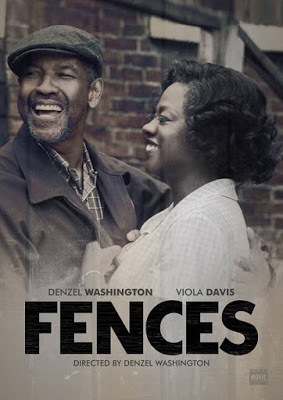 BUILDING FENCES My last movie of 2017, Fences, was a stunning drama of the first order. It is filled with powerhouse performances from all involved, but especially from Denzel Washington and Viola Davis, whose characters are the true focus of the film...Fences is more than a moving, very human story. It also exposes facets of relationships specific to black family dynamics that run deeper than the traditional racial tropes of many lesser films. Fences doesn't settle for the obvious. It has a far more complex heart beating with the deeper scars of the black experience in America, many of which come from within the culture as opposed to the harsh external cultural pressures. In Fences, the Black experience is shown through the subtle cracks of difference in the many things we all share in common. I don't want to give the wrong impression. Fences is not a racially charged film. Its focus is character not race, and because of this, it exposes something far deeper. For me, this is what made Fences a sharp, intelligent, thought provoking, ultimately important experience...
BUILDING FENCES My last movie of 2017, Fences, was a stunning drama of the first order. It is filled with powerhouse performances from all involved, but especially from Denzel Washington and Viola Davis, whose characters are the true focus of the film...Fences is more than a moving, very human story. It also exposes facets of relationships specific to black family dynamics that run deeper than the traditional racial tropes of many lesser films. Fences doesn't settle for the obvious. It has a far more complex heart beating with the deeper scars of the black experience in America, many of which come from within the culture as opposed to the harsh external cultural pressures. In Fences, the Black experience is shown through the subtle cracks of difference in the many things we all share in common. I don't want to give the wrong impression. Fences is not a racially charged film. Its focus is character not race, and because of this, it exposes something far deeper. For me, this is what made Fences a sharp, intelligent, thought provoking, ultimately important experience...
Published on January 01, 2017 09:26
December 31, 2016
IN PRAISE OF LA LA LAND
 IN PRAISE OF LA LA LAND La La Land is more than simply a paean to movie musicals, it is an evolution of the form. There are flaws in the film, but they are endearing and appear to have been purposely allowed in a way that draws you into the film rather than breaking your suspension of disbelief...The film's messages are subtle, but pointed, never being heavy-handed: The suppression of creativity and instinct in order to... grow up and become responsible; the decisions to sacrifice emotional love and relationships in order to achieve dreams; the love for an abstract, be it jazz or acting, so strong you allow it to consume you; and, finally, not all Hollywood musicals need the ending we want or expect, but can still be perfectly satisfying.
IN PRAISE OF LA LA LAND La La Land is more than simply a paean to movie musicals, it is an evolution of the form. There are flaws in the film, but they are endearing and appear to have been purposely allowed in a way that draws you into the film rather than breaking your suspension of disbelief...The film's messages are subtle, but pointed, never being heavy-handed: The suppression of creativity and instinct in order to... grow up and become responsible; the decisions to sacrifice emotional love and relationships in order to achieve dreams; the love for an abstract, be it jazz or acting, so strong you allow it to consume you; and, finally, not all Hollywood musicals need the ending we want or expect, but can still be perfectly satisfying.I was wowed by the director's first film, Whiplash, but here he is in full auteur mode keeping his delightfully frothy concoction from ever losing altitude. I've seen some excellent movies this year, but while it may not be for everybody, La La Land could end up as my favorite...
Published on December 31, 2016 13:29
December 13, 2016
PULP NOW: LANCE SPEARMAN ~ THE BLACK JAMES BOND
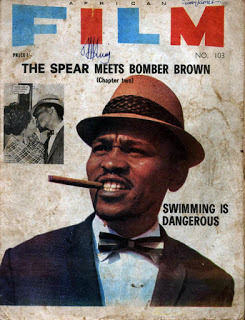
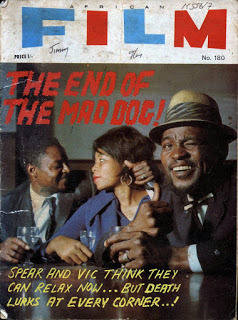 PULP NOW: LANCE SPEARMAN ~ THE BLACK JAMES BOND
~ Lance Spearman, has a charming way with girls and a deadly way with thugs ~
Look-books—a term coined for magazines featuring a mash up of action photographs accompanied by comic strip style captions (also known as photo books)—are relatively unknown in America. However in many other parts of the world, this comic book hybrid of captioned action photographs had a rabid following from the ‘60s to the late ‘80s. In Africa, look-books served as surrogates for films—as a means to tell film-like stories— at a time when commercial African cinema was not yet invented.
PULP NOW: LANCE SPEARMAN ~ THE BLACK JAMES BOND
~ Lance Spearman, has a charming way with girls and a deadly way with thugs ~
Look-books—a term coined for magazines featuring a mash up of action photographs accompanied by comic strip style captions (also known as photo books)—are relatively unknown in America. However in many other parts of the world, this comic book hybrid of captioned action photographs had a rabid following from the ‘60s to the late ‘80s. In Africa, look-books served as surrogates for films—as a means to tell film-like stories— at a time when commercial African cinema was not yet invented.
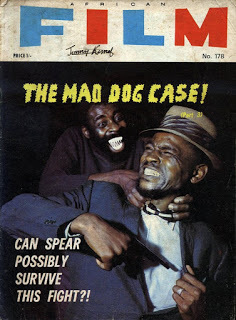 African Film Magazine (AFM) was the most popular of the African look-books. Alternately called Spear Magazine, every bi-weekly issue had eager fans clamoring for it at their local newsstand. Created by James Richard Abe Bailey, the character of Lance Spearman shattered racist stereotypes of the uncivilized, uneducated, spear-carrying Africans as portrayed in most Western comic books of the era. Each issue of AFM contained thirty one pages of action filled black and white captioned photographs edited in urbane cinematic style. AFM began publishing the Spear’s adventures during the African post-colonial era of the mid-sixties under the banner of Drum Publications. The magazine found immediate popularity, with every issue flooding across Anglophone Africa, from Nigeria and Ghana to South Africa, Zambia, Tanzania, Kenya and Uganda. ~ Drum Publications—tired of the clichéd racist images of Black people in contrast to the heroic images of white soldiers and superheroes in Western comics—decided to create comic books that would appeal to Black men. They began photographing black men in adventures that were designed to appeal to the Black African population. ~ Balogun
African Film Magazine (AFM) was the most popular of the African look-books. Alternately called Spear Magazine, every bi-weekly issue had eager fans clamoring for it at their local newsstand. Created by James Richard Abe Bailey, the character of Lance Spearman shattered racist stereotypes of the uncivilized, uneducated, spear-carrying Africans as portrayed in most Western comic books of the era. Each issue of AFM contained thirty one pages of action filled black and white captioned photographs edited in urbane cinematic style. AFM began publishing the Spear’s adventures during the African post-colonial era of the mid-sixties under the banner of Drum Publications. The magazine found immediate popularity, with every issue flooding across Anglophone Africa, from Nigeria and Ghana to South Africa, Zambia, Tanzania, Kenya and Uganda. ~ Drum Publications—tired of the clichéd racist images of Black people in contrast to the heroic images of white soldiers and superheroes in Western comics—decided to create comic books that would appeal to Black men. They began photographing black men in adventures that were designed to appeal to the Black African population. ~ Balogun
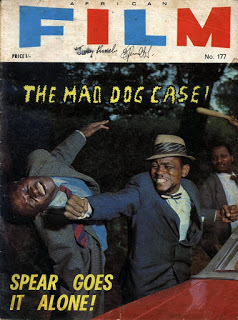 The responsibility for AFM’s phenomenal success rested squarely on the fictional adventures of one man—the dashing, straw-hatted, bow-tied, sport-jacketed, fast driving, Whiskey on the rocks drinking, cool cat, Lance Spearman—the black James Bond. A decade before Shaft redefined cool for American audiences, the Spear was out Bonding Bond, battling an ever more outrageous array of colorful, over-the-top evil villains with every issue. An expert marksman, skilled at karate and boxing, the Spear (as he was nicknamed) is a rollicking combination of African super-spy, detective, and superhero. He rocks a goatee, smokes expensive cigars, drinks good Scotch, and dresses in well-tailored suits complete with bow tie and Panama hat. He likes his women buxom and his cars fast—particularly his Corvette Stingray. His favored handgun is a Beretta he calls my little friend.
~ He is the black James Bond and the most popular fictional character in Africa today..” ~ Stanley Meisler, Los Angeles Times foreign and diplomatic correspondent, 1968.
The responsibility for AFM’s phenomenal success rested squarely on the fictional adventures of one man—the dashing, straw-hatted, bow-tied, sport-jacketed, fast driving, Whiskey on the rocks drinking, cool cat, Lance Spearman—the black James Bond. A decade before Shaft redefined cool for American audiences, the Spear was out Bonding Bond, battling an ever more outrageous array of colorful, over-the-top evil villains with every issue. An expert marksman, skilled at karate and boxing, the Spear (as he was nicknamed) is a rollicking combination of African super-spy, detective, and superhero. He rocks a goatee, smokes expensive cigars, drinks good Scotch, and dresses in well-tailored suits complete with bow tie and Panama hat. He likes his women buxom and his cars fast—particularly his Corvette Stingray. His favored handgun is a Beretta he calls my little friend.
~ He is the black James Bond and the most popular fictional character in Africa today..” ~ Stanley Meisler, Los Angeles Times foreign and diplomatic correspondent, 1968.
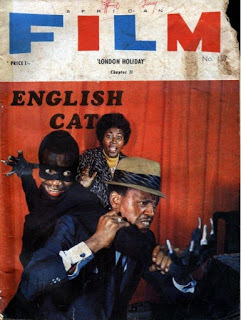 Virtually leaping off the pages of AFM, the Spear captured the dream of a new generation of urban African youth. These were young men and women who left their villages for the cities in search of a better life. The Spear became a touchstone, helping to shape their view of their place in an empowered new world. The Spear was Western hip without losing or hiding his distinctly African cultural identity. Eating fine foods, loving beautiful women, the Spear possessed a slightly arrogant, self-confident, easy talking style, which made him equally at home mingling in high society or fighting dirty in a back alley street. Lance Spearman spoke directly and individually to so many of those who followed his adventures. He created an idealized view of modern Africa, delivering regular doses of self-esteem, personal dreams, and hope to readers searching for relevant role models.
~ My mother was an ardent reader of this magazine. She would make sure every week she bought a copy at Kingstone Bookstore next to Shoprite on Cairo Road. Our home was like library, friends would come to read these. ~ Chris Phiri
Virtually leaping off the pages of AFM, the Spear captured the dream of a new generation of urban African youth. These were young men and women who left their villages for the cities in search of a better life. The Spear became a touchstone, helping to shape their view of their place in an empowered new world. The Spear was Western hip without losing or hiding his distinctly African cultural identity. Eating fine foods, loving beautiful women, the Spear possessed a slightly arrogant, self-confident, easy talking style, which made him equally at home mingling in high society or fighting dirty in a back alley street. Lance Spearman spoke directly and individually to so many of those who followed his adventures. He created an idealized view of modern Africa, delivering regular doses of self-esteem, personal dreams, and hope to readers searching for relevant role models.
~ My mother was an ardent reader of this magazine. She would make sure every week she bought a copy at Kingstone Bookstore next to Shoprite on Cairo Road. Our home was like library, friends would come to read these. ~ Chris Phiri
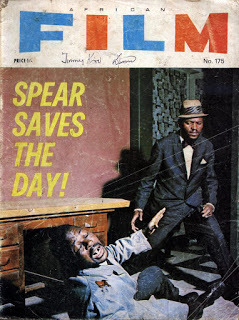 Employing budget conscious improvisational methods (the trademark Corvette Stingray was often a photo of a Dinky Toy), the Spear’s adventures were captured through vibrant action-filled photographs. This alternative to the poorly drawn comic art available at the time available created a do-it-yourself movement of self-reliance, producing an attitude eventually assimilated into Nollywood movie making as well as the coming explosion of ‘70s era Blaxploitation in America. At the peak of AFM’s bi-weekly popularity, Lance Spearman had over half a million fans across Africa. At that time, AFM printed 300,00 copies of each fourteen cent magazine. Every issue consistently sold out, creating an active and lucrative second-hand market. ~ The overloaded phrase, ‘second-hand Good Samaritan’, meant the person who lent us a copy had borrowed it from somebody, who had borrowed it from somebody, etc. etc. So we read it as, not second but, tenth or even twentieth-hand. All of which meant by the time it reached us, it was in hardly readable tatters! ~ Ingina y'Igihanga
Employing budget conscious improvisational methods (the trademark Corvette Stingray was often a photo of a Dinky Toy), the Spear’s adventures were captured through vibrant action-filled photographs. This alternative to the poorly drawn comic art available at the time available created a do-it-yourself movement of self-reliance, producing an attitude eventually assimilated into Nollywood movie making as well as the coming explosion of ‘70s era Blaxploitation in America. At the peak of AFM’s bi-weekly popularity, Lance Spearman had over half a million fans across Africa. At that time, AFM printed 300,00 copies of each fourteen cent magazine. Every issue consistently sold out, creating an active and lucrative second-hand market. ~ The overloaded phrase, ‘second-hand Good Samaritan’, meant the person who lent us a copy had borrowed it from somebody, who had borrowed it from somebody, etc. etc. So we read it as, not second but, tenth or even twentieth-hand. All of which meant by the time it reached us, it was in hardly readable tatters! ~ Ingina y'Igihanga
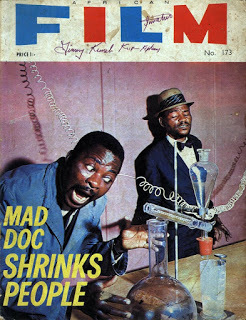 Compared to today’s multi-millions of fans who hang on every hundred and forty word belch from celebrity Twitter feeds, a mere half a million fans may be considered negligible. However, the Spear earned his half million Lancers in the ‘60s—before the Internet was even the spark of an idea—in a time when people wrote letters by hand with no conception of e-mail. From that perspective, Lance Spearman was a celebrity god.
Compared to today’s multi-millions of fans who hang on every hundred and forty word belch from celebrity Twitter feeds, a mere half a million fans may be considered negligible. However, the Spear earned his half million Lancers in the ‘60s—before the Internet was even the spark of an idea—in a time when people wrote letters by hand with no conception of e-mail. From that perspective, Lance Spearman was a celebrity god.
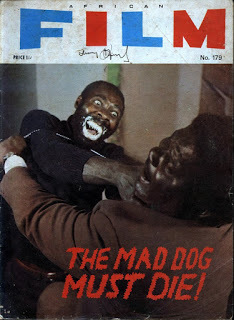 Surprisingly, considering the ethnic centered politics of the era, the photographic and writing forces behind Lance Spearman were a multi-racial team effort. Omitting any reference to their actual South African headquarters (company info inside the magazines indicated offices in the less controversial Kenya and Nairobi), Drum Publications became a valuable training ground for emerging African writers such as Can Themba, Nat Nakassa and Nigeria’s Nelson Ottah. Along a number of students from the University of Lesotho—who were also given their entre into magazine writing—were paid $65 per Lance Spearman story. Due to a fear of apartheid censorship, Drum publisher Jim Bailey avoided any stories of a racial or political nature. He also published several different versions of the magazine, which contained the same interior stories, but under different titles to fit the varying demographics between South Africa and East and West Africa. ~ These were the comics of our time! You would do anything to get the latest series. Often we had to wait in line to borrow from a friend who had one—even do their home chores if need be! The one I liked most was when Zollo tied Spear on a rope and lowered him into this big boiling pot, but of course Spear escaped. Hahaha...Made us love reading. ~ Sewanywa Sekiswa The finished stories were sent to Johannesburg, South Africa, where Malcolm Dunkfeld, a white South African, oversaw the editing. From there, the scripts were sent to Swaziland where black cameramen under the direction of white photographers Stanley N. Bunn and Trevor Barrett, staged and shot the scenes from the stories. Finally, the completed issues were mastered and printed in London before being shipped back to South Africa for distribution.
Surprisingly, considering the ethnic centered politics of the era, the photographic and writing forces behind Lance Spearman were a multi-racial team effort. Omitting any reference to their actual South African headquarters (company info inside the magazines indicated offices in the less controversial Kenya and Nairobi), Drum Publications became a valuable training ground for emerging African writers such as Can Themba, Nat Nakassa and Nigeria’s Nelson Ottah. Along a number of students from the University of Lesotho—who were also given their entre into magazine writing—were paid $65 per Lance Spearman story. Due to a fear of apartheid censorship, Drum publisher Jim Bailey avoided any stories of a racial or political nature. He also published several different versions of the magazine, which contained the same interior stories, but under different titles to fit the varying demographics between South Africa and East and West Africa. ~ These were the comics of our time! You would do anything to get the latest series. Often we had to wait in line to borrow from a friend who had one—even do their home chores if need be! The one I liked most was when Zollo tied Spear on a rope and lowered him into this big boiling pot, but of course Spear escaped. Hahaha...Made us love reading. ~ Sewanywa Sekiswa The finished stories were sent to Johannesburg, South Africa, where Malcolm Dunkfeld, a white South African, oversaw the editing. From there, the scripts were sent to Swaziland where black cameramen under the direction of white photographers Stanley N. Bunn and Trevor Barrett, staged and shot the scenes from the stories. Finally, the completed issues were mastered and printed in London before being shipped back to South Africa for distribution.
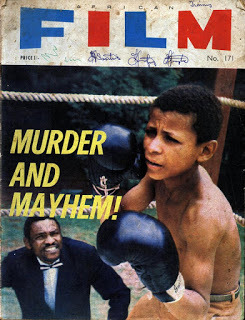 Filling the roles of the characters in the stories was a troop of amateur black actors. These included Jore Mkwanazi, the man who would become the embodiment of Lance Spearman. A former houseboy, Mkwanazi was discovered playing piano in a nightclub by Stanley N. Bunn on of the directors of photography. Bunn saw in Mkwanazi’s features the tough, cynical, sophisticated look he believed was needed for the role of a black super-spy. Skyrocketing from earning $35 a month for scrubbing floors to $215 monthly, Mkwanazi exploded into the African consciousness, becoming an indelible black liberation icon. ~ Yeah, my hero. Dapper with Scotch-on-the-rocks his favourite drink. There is his Little Friend—a Beretta in a holster under his well-tailored suit. He smokes expensive cigars and wears a panama hat. In later editions, his most trusted allies were Sonia, a karate kicking baaad lady, a catapult wielding youngster named Lemmy, and a uniformed police officer Captain Victor... ~ Sulubu Tuva
Filling the roles of the characters in the stories was a troop of amateur black actors. These included Jore Mkwanazi, the man who would become the embodiment of Lance Spearman. A former houseboy, Mkwanazi was discovered playing piano in a nightclub by Stanley N. Bunn on of the directors of photography. Bunn saw in Mkwanazi’s features the tough, cynical, sophisticated look he believed was needed for the role of a black super-spy. Skyrocketing from earning $35 a month for scrubbing floors to $215 monthly, Mkwanazi exploded into the African consciousness, becoming an indelible black liberation icon. ~ Yeah, my hero. Dapper with Scotch-on-the-rocks his favourite drink. There is his Little Friend—a Beretta in a holster under his well-tailored suit. He smokes expensive cigars and wears a panama hat. In later editions, his most trusted allies were Sonia, a karate kicking baaad lady, a catapult wielding youngster named Lemmy, and a uniformed police officer Captain Victor... ~ Sulubu Tuva
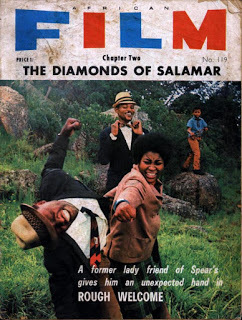
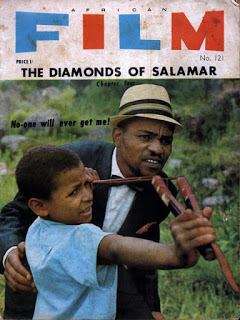
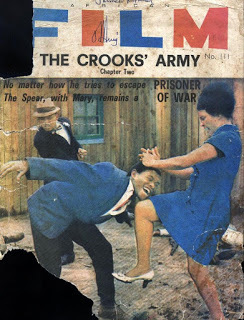 The Spear also surrounded himself with loyal action-ready allies. Closest to him was his agile assistant, Sonia, a high kicking, karate chopping beauty who was never a damsel in distress. Lemmy, who never missed a target with his catapult, was the Spear’s young sidekick, who provided a vulnerable and humanistic edge to the stories. There was also the bulky strength and tenacity of the quick thinking Capitan Victor, who often provide the Spear with backup. With the help of Sonia, Lemmy, and Captain Victor, readers could always trust the Spear to escape from any situation no matter how dire. This was a fearsome foursome to be reckoned with, their respect for one another providing yet another positive influence to come from the series. ~ The dialogue was hip and contemporary, in the manner of the racy thrillers of James Hadley Chase, the hottest writer we cherished back then. The lines were indeed riveting such that one readily committed them to memory that lasts to this day. For instance, the thug bearing down on Sonia gets the following words from Spear as he steps forward for a fight: “Woman-beater, try me for size!” Before the hoodlum can get to the races, Spear lands him the sucker-punch, saying: “You have a glass jaw!” With the fallen thug crying “Aaaaaargh!” Lemmy would congratulate Spear thus: “Attaboy, Spear!” ~ Uzor Maxim Uzoatu
The Spear also surrounded himself with loyal action-ready allies. Closest to him was his agile assistant, Sonia, a high kicking, karate chopping beauty who was never a damsel in distress. Lemmy, who never missed a target with his catapult, was the Spear’s young sidekick, who provided a vulnerable and humanistic edge to the stories. There was also the bulky strength and tenacity of the quick thinking Capitan Victor, who often provide the Spear with backup. With the help of Sonia, Lemmy, and Captain Victor, readers could always trust the Spear to escape from any situation no matter how dire. This was a fearsome foursome to be reckoned with, their respect for one another providing yet another positive influence to come from the series. ~ The dialogue was hip and contemporary, in the manner of the racy thrillers of James Hadley Chase, the hottest writer we cherished back then. The lines were indeed riveting such that one readily committed them to memory that lasts to this day. For instance, the thug bearing down on Sonia gets the following words from Spear as he steps forward for a fight: “Woman-beater, try me for size!” Before the hoodlum can get to the races, Spear lands him the sucker-punch, saying: “You have a glass jaw!” With the fallen thug crying “Aaaaaargh!” Lemmy would congratulate Spear thus: “Attaboy, Spear!” ~ Uzor Maxim Uzoatu
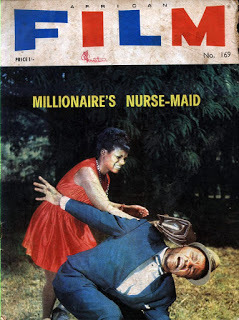 Then there were the Spear’s colorful enemies. Described as menace in overdrive, Rabon Zollo bore a hideous black eye-patch over his missing eye. The Hook-Hand Killer, who obviously killed using the evil hook on his hand. Dr. Devil, a criminal mastermind whose electronic wizardry threatened to direct international experimental rockets off course. Mad Doc, an insane inventor who created a serum with the power to shrink people. Professor Thor used a vile machine to read minds, while Professor Rubens used the organs of animals to produce a werewolf. There were also other villains, such as Themermolls, Countess Scarlett, and The Head Huntress. But the menace of The Cat presented Spear with possibly his greatest challenge—a black-masked cat burglar who used clawed gloves to scale any building or rip to shreds anyone who tried to stop him. Battling them all, Spear was always the colossus positive force who would save the world.
~ Lance Spearman was our own James Bond, Jason Bourne, Jack Bauer all rolled into one... ~ Jimmy Mungai
Then there were the Spear’s colorful enemies. Described as menace in overdrive, Rabon Zollo bore a hideous black eye-patch over his missing eye. The Hook-Hand Killer, who obviously killed using the evil hook on his hand. Dr. Devil, a criminal mastermind whose electronic wizardry threatened to direct international experimental rockets off course. Mad Doc, an insane inventor who created a serum with the power to shrink people. Professor Thor used a vile machine to read minds, while Professor Rubens used the organs of animals to produce a werewolf. There were also other villains, such as Themermolls, Countess Scarlett, and The Head Huntress. But the menace of The Cat presented Spear with possibly his greatest challenge—a black-masked cat burglar who used clawed gloves to scale any building or rip to shreds anyone who tried to stop him. Battling them all, Spear was always the colossus positive force who would save the world.
~ Lance Spearman was our own James Bond, Jason Bourne, Jack Bauer all rolled into one... ~ Jimmy Mungai
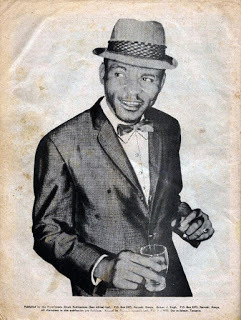
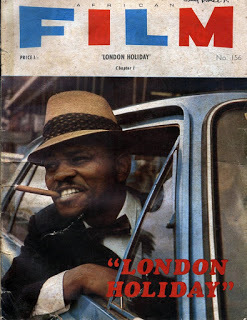 With their combination of extreme cartoon-like violence and influences from early Hollywood melodramas, AFM and other look-books were important precursors to the emergence of African cinema. They also had influence on the rise of African crime fiction—readers of Lance Spearman finding needed encouragement to create heroes of their own in a world of black nationalism.
With their combination of extreme cartoon-like violence and influences from early Hollywood melodramas, AFM and other look-books were important precursors to the emergence of African cinema. They also had influence on the rise of African crime fiction—readers of Lance Spearman finding needed encouragement to create heroes of their own in a world of black nationalism.
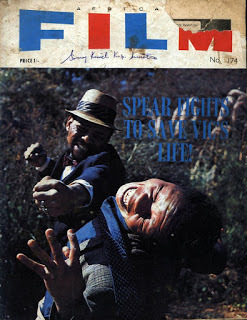 1972. after one hundred and fifty issues, AFM suddenly disappeared from the newsstand without any official explanation. The politics of apartheid were the most likely cause, as used copies of the magazine also disappeared from the mainstream becoming a valuable covert smuggling commodity. However, the strongest rumor among devastated fans was Lance Spearman had died—or at least the actor who portrayed him. None of this has ever been confirmed, but loyal readers of the Spear’s adventures refused to believe he was dead.
~ Spear could never die, we told ourselves. We had to make do with smuggled back issues of African Film dating back to the 1960s and even the years covering the 1967-70 duration of the Nigeria-Biafra War. We devoured the back issues waiting for the inevitable day that the unbeatable Lance Spearman would make a triumphant return, as it stood as a given to us that his death was quite impossible. ~ Uzor Maxim Uzoatu
While Lance Spearman is criticized in politically correct circles for his perceived stereotypical portrayal of blackness and masculinity, his adventures were ultimately responsible for raising the self-esteem and personal consciousness of a generation of readers. There could be no more beautiful or positive legacy.
1972. after one hundred and fifty issues, AFM suddenly disappeared from the newsstand without any official explanation. The politics of apartheid were the most likely cause, as used copies of the magazine also disappeared from the mainstream becoming a valuable covert smuggling commodity. However, the strongest rumor among devastated fans was Lance Spearman had died—or at least the actor who portrayed him. None of this has ever been confirmed, but loyal readers of the Spear’s adventures refused to believe he was dead.
~ Spear could never die, we told ourselves. We had to make do with smuggled back issues of African Film dating back to the 1960s and even the years covering the 1967-70 duration of the Nigeria-Biafra War. We devoured the back issues waiting for the inevitable day that the unbeatable Lance Spearman would make a triumphant return, as it stood as a given to us that his death was quite impossible. ~ Uzor Maxim Uzoatu
While Lance Spearman is criticized in politically correct circles for his perceived stereotypical portrayal of blackness and masculinity, his adventures were ultimately responsible for raising the self-esteem and personal consciousness of a generation of readers. There could be no more beautiful or positive legacy.
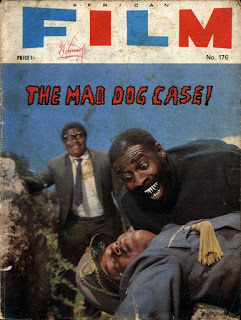
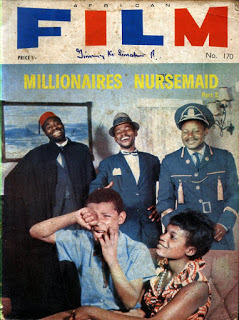
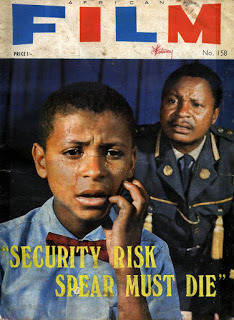
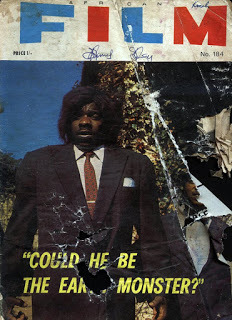
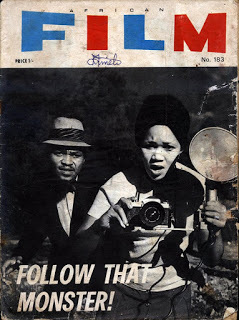
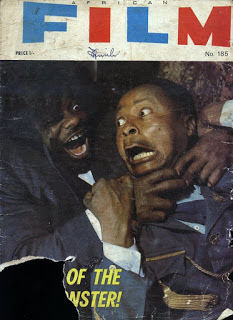
Published on December 13, 2016 15:20
December 10, 2016
DO YOU KNOW MISS SLOANE?
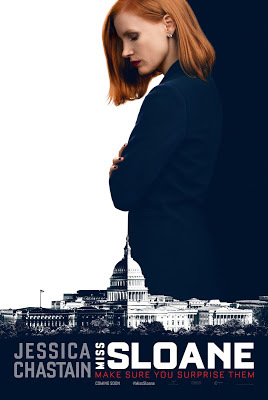 DO YOU KNOW MISS SLOANE? Jessica Chastain’s new movie Miss Sloane is getting a roasting from the critics who appear to have missed the whole point of the film. Despite its apparent focus on the unethical political maneuvering of Washington lobbyists and the hot button issue of gun control in America, Miss Sloane is about one thing only—Miss Sloane. Chastain is an intense actor and she brings every Machiavellian emotion she has ever encountered to manifest her portrayal of a single-minded individual, with a twisted labyrinth for a mind, who is fanatically dedicated to a single cause—winning. There are touches to her performance that pull her character back from the edge of full blown sociopathy, but it’s a dangerous balancing act. Miss Sloane isn’t about politics, lobbying, or gun control...it’s about character, one single solitary devious beyond imagination character put under the microscope. This is Jessica Chastain’s film from start to end, but she is ably buoyed by the supporting cast, especially Mark Strong as the likable boutique law firm owner who sets everything in motion, but quickly finds himself on the wrong end of what he wished for. He is the counterpoint to Chastain’s character that provides perspective. ***SPOILER ALERT*** Many of the reviews who rant on and on about the amoral and unrealistic politics of the film (as if there is any morality and realism in current politics) leading to a fantasy conclusion again miss the point. As I watched Miss Sloane work her way through a film filled with rapid-fire Sorkin-like dialogue, Chastain’s performance sucked me into it’s wicked, convoluted heart, and gave me the biggest dose of climactic film satisfaction since The Accountant. I wanted Miss Sloane to win…I wanted her to bring a vengeance of comeuppance to every single one of her legion of enemies. When her final earthquake begins to shake I had a huge smile on my face and a black cheer in my black heart. Don’t be put off by the reviews and the naysayers. Don’t be put off thinking this is a political film or a message film. It isn’t any of those things. Go and see this film for its sharp performances, sharp script, and the anticipated, yet slam bang, perfectly in character ending. ***END SPOILER ALERT*** Miss Sloane gave me exactly what I want in a film—smart characters, intelligent dialogue, a storyline where the first scene comes back around in the last scene, and a satisfying experience that had me leaving the theatre with a smile while chattering with friends about the brilliant performances, the nuances of the script, and the mechanics of the film itself.
DO YOU KNOW MISS SLOANE? Jessica Chastain’s new movie Miss Sloane is getting a roasting from the critics who appear to have missed the whole point of the film. Despite its apparent focus on the unethical political maneuvering of Washington lobbyists and the hot button issue of gun control in America, Miss Sloane is about one thing only—Miss Sloane. Chastain is an intense actor and she brings every Machiavellian emotion she has ever encountered to manifest her portrayal of a single-minded individual, with a twisted labyrinth for a mind, who is fanatically dedicated to a single cause—winning. There are touches to her performance that pull her character back from the edge of full blown sociopathy, but it’s a dangerous balancing act. Miss Sloane isn’t about politics, lobbying, or gun control...it’s about character, one single solitary devious beyond imagination character put under the microscope. This is Jessica Chastain’s film from start to end, but she is ably buoyed by the supporting cast, especially Mark Strong as the likable boutique law firm owner who sets everything in motion, but quickly finds himself on the wrong end of what he wished for. He is the counterpoint to Chastain’s character that provides perspective. ***SPOILER ALERT*** Many of the reviews who rant on and on about the amoral and unrealistic politics of the film (as if there is any morality and realism in current politics) leading to a fantasy conclusion again miss the point. As I watched Miss Sloane work her way through a film filled with rapid-fire Sorkin-like dialogue, Chastain’s performance sucked me into it’s wicked, convoluted heart, and gave me the biggest dose of climactic film satisfaction since The Accountant. I wanted Miss Sloane to win…I wanted her to bring a vengeance of comeuppance to every single one of her legion of enemies. When her final earthquake begins to shake I had a huge smile on my face and a black cheer in my black heart. Don’t be put off by the reviews and the naysayers. Don’t be put off thinking this is a political film or a message film. It isn’t any of those things. Go and see this film for its sharp performances, sharp script, and the anticipated, yet slam bang, perfectly in character ending. ***END SPOILER ALERT*** Miss Sloane gave me exactly what I want in a film—smart characters, intelligent dialogue, a storyline where the first scene comes back around in the last scene, and a satisfying experience that had me leaving the theatre with a smile while chattering with friends about the brilliant performances, the nuances of the script, and the mechanics of the film itself.
Published on December 10, 2016 16:20
December 7, 2016
GET YOUR MOTOR RUNNING ~ BARBARIANS ON BIKES
 GET YOUR MOTOR RUNNING ~ BARBARIANS ON BIKES
GET YOUR MOTOR RUNNING ~ BARBARIANS ON BIKESPost World War II America was supposed to be a return to the idyllic values of the traditional family. Rosie the Riveter would willingly give her job back to a man, get out of the factory, put on an apron, and go back into the kitchen. Men would return from the war unfazed by their experiences and take up the responsibility of providing for their families without missing a beat. If the American family was not restored to the pinnacle of its idealized form, how could we justify all that was sacrificed in fighting for our freedom and the freedom of our nation's friends?
 However, much of America wasn't buying it. We had been to the gates of Hell and beyond. We were warriors, and supporters of warriors. We had discovered our dark sides where we were selfish, driven, ambitious, strategic and most importantly...killers. To go to war—to win a war on the largest scale imaginable—we had to go dark, black even, become comfortable with the human wildness within us. And we did it—we won the war—only to come home and be expected to return to normal. But what was normal? The American male had experienced first-hand the devastation, the killing, the hunger—the starvation even—and the torture. Our hearts knew the darkness and it called to us despite every desire to want the Father Knows Best, Leave It To Beaver, separate beds for Lucy and Ricky world being shoved down our throats.
However, much of America wasn't buying it. We had been to the gates of Hell and beyond. We were warriors, and supporters of warriors. We had discovered our dark sides where we were selfish, driven, ambitious, strategic and most importantly...killers. To go to war—to win a war on the largest scale imaginable—we had to go dark, black even, become comfortable with the human wildness within us. And we did it—we won the war—only to come home and be expected to return to normal. But what was normal? The American male had experienced first-hand the devastation, the killing, the hunger—the starvation even—and the torture. Our hearts knew the darkness and it called to us despite every desire to want the Father Knows Best, Leave It To Beaver, separate beds for Lucy and Ricky world being shoved down our throats.
 The wounded American psyche was forcibly repressed. Everywhere we turned TV, Madison Avenue, the stress of keeping up with the Jones, the responsibility for too many decisions in a world without orders to follow, all of it added up to create a human pressure cooker. There had to be an outlet for our wildness, our darkness, our pent up adrenaline, a way to understand the horror we had been through. Enter the men’s adventure magazines…Published from the late ’40s through the early ’70s, these slick-cover magazines catered to a male audience with lurid true tales of adventure, of true wartime daring, exotic travel, attacks by wild animals of every ilk (i.e. Weasels Ripped My Flesh). Many covers, created by some of the most brilliant artists of the day, featured scenes of scantily clad, tiny-waisted, big breasted women in jeopardy being rescued by muscular male heroes toting big guns, spears, knives, and other phallic symbols. There were also covers showing these same women about to be whipped, burned, fed to alligators, or sold into sexual slavery by leering Nazi officers, evil Nazi doctors, and horrendous Nazi torturers.
The wounded American psyche was forcibly repressed. Everywhere we turned TV, Madison Avenue, the stress of keeping up with the Jones, the responsibility for too many decisions in a world without orders to follow, all of it added up to create a human pressure cooker. There had to be an outlet for our wildness, our darkness, our pent up adrenaline, a way to understand the horror we had been through. Enter the men’s adventure magazines…Published from the late ’40s through the early ’70s, these slick-cover magazines catered to a male audience with lurid true tales of adventure, of true wartime daring, exotic travel, attacks by wild animals of every ilk (i.e. Weasels Ripped My Flesh). Many covers, created by some of the most brilliant artists of the day, featured scenes of scantily clad, tiny-waisted, big breasted women in jeopardy being rescued by muscular male heroes toting big guns, spears, knives, and other phallic symbols. There were also covers showing these same women about to be whipped, burned, fed to alligators, or sold into sexual slavery by leering Nazi officers, evil Nazi doctors, and horrendous Nazi torturers.
 There was a need to confront such perversions—for men to know there was still a battle they could fight, still a damsel they could rescue (as they had rescued their wives, girlfriends, and families through the hell of battle). They needed a way to be an unquestioned hero, to forge an explanation for the terrors and revulsions heaped upon them in war. To feel something—anything—again. Slightly tawdry, hidden down the sides of dad’s armchair, stacked in his den or garage, the men’s adventure magazines (often misnomered as the sweats—a derogatory term not applied until the ‘80s by a new generation who had no understanding of the purpose) were a safe way to escape for men craving an existence beyond the world being forced upon them by societal expectations, disapproval, and repression. Starting in the early 1960s—before Hunter Thompson’s 1966 book Hell's Angels made a splash and Grade B biker movies were common at drive-in theaters—men’s adventure magazines began publishing stories and covers featuring a new breed of home-grown bad guys: outlaw motorcycle gangs. Men’s adventure magazines continued to feature outlaw bikers in stories, covers and interior artwork and photos through into the mid-1970s, when the MAM genre faded away.
There was a need to confront such perversions—for men to know there was still a battle they could fight, still a damsel they could rescue (as they had rescued their wives, girlfriends, and families through the hell of battle). They needed a way to be an unquestioned hero, to forge an explanation for the terrors and revulsions heaped upon them in war. To feel something—anything—again. Slightly tawdry, hidden down the sides of dad’s armchair, stacked in his den or garage, the men’s adventure magazines (often misnomered as the sweats—a derogatory term not applied until the ‘80s by a new generation who had no understanding of the purpose) were a safe way to escape for men craving an existence beyond the world being forced upon them by societal expectations, disapproval, and repression. Starting in the early 1960s—before Hunter Thompson’s 1966 book Hell's Angels made a splash and Grade B biker movies were common at drive-in theaters—men’s adventure magazines began publishing stories and covers featuring a new breed of home-grown bad guys: outlaw motorcycle gangs. Men’s adventure magazines continued to feature outlaw bikers in stories, covers and interior artwork and photos through into the mid-1970s, when the MAM genre faded away.
 The life of the outlaw biker provided two inherent, exploitable, viewpoints. The vicarious promise of unbridled freedom, of throwing away the shackles of repression in an orgy of roaring engines, lust, and brutality—or the chance to empathically take on this new evil and emerge victorious from a new war on American values. They were also an amazingly colorful explosion of violence for the men’s adventure magazine cover artists—tired of Nazi torturers and running out of deadly attack animals (Chewed To Bits By Giant Turtles)—to exploit. While the stories within the pages of the men’s adventure magazines remain highly underrated—many writers who went on to become bestselling authors got their start in the men’s adventure magazines—the cover art and interior illustrations have become a collectible commodity.
The life of the outlaw biker provided two inherent, exploitable, viewpoints. The vicarious promise of unbridled freedom, of throwing away the shackles of repression in an orgy of roaring engines, lust, and brutality—or the chance to empathically take on this new evil and emerge victorious from a new war on American values. They were also an amazingly colorful explosion of violence for the men’s adventure magazine cover artists—tired of Nazi torturers and running out of deadly attack animals (Chewed To Bits By Giant Turtles)—to exploit. While the stories within the pages of the men’s adventure magazines remain highly underrated—many writers who went on to become bestselling authors got their start in the men’s adventure magazines—the cover art and interior illustrations have become a collectible commodity.
 Recognizing the continuing particular allure of those outlaw motorcycle gang covers and illustrations, men’s adventure magazine collector and guru Robert Deis and his publishing partner Wyatt Doyle recently added a new book, Barbarians on Bikes, to their Men’s Adventure Library series. Unlike their previous anthologies collecting men’s adventure magazine stories and the artwork accompanying them (Weasels Ripped My Flesh!, He-Men, Bag Men, and Nymphos, Cryptozoology Anthology, A Handful of Hell), Barbarians on Bikes is all artwork and photos. It’s a stunning, large format (8.5” x 11”), full-color visual archive of men’s adventure magazine covers, interior illustrations and photos featuring outlaw motorcycle gangs and other biker-related images. I recently had the opportunity to chat with Deis and Doyle about the new collection (to which I was honored to add an afterword)... After four successful Men’s Adventure Library books collecting some of the best short stories from the genre, what made you decide to do a collection featuring strictly covers and other artwork?
Recognizing the continuing particular allure of those outlaw motorcycle gang covers and illustrations, men’s adventure magazine collector and guru Robert Deis and his publishing partner Wyatt Doyle recently added a new book, Barbarians on Bikes, to their Men’s Adventure Library series. Unlike their previous anthologies collecting men’s adventure magazine stories and the artwork accompanying them (Weasels Ripped My Flesh!, He-Men, Bag Men, and Nymphos, Cryptozoology Anthology, A Handful of Hell), Barbarians on Bikes is all artwork and photos. It’s a stunning, large format (8.5” x 11”), full-color visual archive of men’s adventure magazine covers, interior illustrations and photos featuring outlaw motorcycle gangs and other biker-related images. I recently had the opportunity to chat with Deis and Doyle about the new collection (to which I was honored to add an afterword)... After four successful Men’s Adventure Library books collecting some of the best short stories from the genre, what made you decide to do a collection featuring strictly covers and other artwork?
 Wyatt Doyle: We pack our anthologies with supplemental artwork, but the focus there is on the writing. A second format, emphasizing the artwork, was a logical next step.
Barbarians
does include a brief introduction, providing a bit of history and context, and your afterword is a potent reality check at the finish. But for the most part, we simply wanted to unleash the wealth of killer art and wild headlines. Like all our Men’s Adventure Library releases, we hope it also serves as a lure, encouraging further expeditions into allfacets of the magazines’ world—the artwork, the stories, the history, and the mags’ unacknowledged impact on popular culture.
Wyatt Doyle: We pack our anthologies with supplemental artwork, but the focus there is on the writing. A second format, emphasizing the artwork, was a logical next step.
Barbarians
does include a brief introduction, providing a bit of history and context, and your afterword is a potent reality check at the finish. But for the most part, we simply wanted to unleash the wealth of killer art and wild headlines. Like all our Men’s Adventure Library releases, we hope it also serves as a lure, encouraging further expeditions into allfacets of the magazines’ world—the artwork, the stories, the history, and the mags’ unacknowledged impact on popular culture.
 Bob Deis: And, of course, the cover and interior artwork is terrific! It was done by some of the best illustrators of the era: artists like Mort Künstler, Charles Copeland, Norm Eastman, Bruce Minney, Basil Gogos, Samson Pollen, Gil Cohen, Al Rossi, John Duillo, Norman Saunders, and Earl Norem.
Bob Deis: And, of course, the cover and interior artwork is terrific! It was done by some of the best illustrators of the era: artists like Mort Künstler, Charles Copeland, Norm Eastman, Bruce Minney, Basil Gogos, Samson Pollen, Gil Cohen, Al Rossi, John Duillo, Norman Saunders, and Earl Norem.
 What drew you to the theme of outlaw bikers and other motorcycle-related images? Bob: Wyatt and I are both fans of biker movies from the ‘60s and ‘70s. The biker stories and artwork in men’s adventure magazines are as wild and crazy-cool as those movies. We realized that, along with biker movies, men’s adventure magazines had been important in creating and spreading the popular image of bikers and motorcycle gangs in the ’60s and ’70s. As we dug deeper, we realized they had actually played a key role, just as they did in expanding awareness of Bigfoot, Sasquatch, and other creatures from the realm of cryptozoology. Wyatt: I can credit my dad (who rides) for early and prolonged exposure to biker movies, and I’ve found men’s adventure magazine fiction to be the one place where the presentation of outlaw biker culture mirrors the way it’s presented in biker B-movies. Neither is all that accurate when stacked against the real thing, but both the mags and the movies distort reality in similar ways. The ping-pong of concepts and iconography between the two serves as a rough chart to the growth and expansion of outlaw biker mythology in popular culture. It was a mutually beneficial exploitation; they regularly ripped—and riffed—off each other. I believe our book is the first to point this out; it’s certainly the first to provide such a wealth of supporting evidence!
What drew you to the theme of outlaw bikers and other motorcycle-related images? Bob: Wyatt and I are both fans of biker movies from the ‘60s and ‘70s. The biker stories and artwork in men’s adventure magazines are as wild and crazy-cool as those movies. We realized that, along with biker movies, men’s adventure magazines had been important in creating and spreading the popular image of bikers and motorcycle gangs in the ’60s and ’70s. As we dug deeper, we realized they had actually played a key role, just as they did in expanding awareness of Bigfoot, Sasquatch, and other creatures from the realm of cryptozoology. Wyatt: I can credit my dad (who rides) for early and prolonged exposure to biker movies, and I’ve found men’s adventure magazine fiction to be the one place where the presentation of outlaw biker culture mirrors the way it’s presented in biker B-movies. Neither is all that accurate when stacked against the real thing, but both the mags and the movies distort reality in similar ways. The ping-pong of concepts and iconography between the two serves as a rough chart to the growth and expansion of outlaw biker mythology in popular culture. It was a mutually beneficial exploitation; they regularly ripped—and riffed—off each other. I believe our book is the first to point this out; it’s certainly the first to provide such a wealth of supporting evidence!
 Why do you feel it is important to preserve the images and stories from the men’s adventure magazines? Bob: Well, it may sound odd, but in part, it’s related to what I studied in college at Ohio State University. My degree was in cultural anthropology, which involves the study of the mythologies, customs, and worldviews of people in different cultures. When I first started collecting and reading vintage men’s adventure magazines, I realized they were a huge and mostly overlooked source of information about mid-20th century American culture. That’s the wonky part of me. The geeky part is that I just totally love men’s adventure magazine stories and artwork. Many of the fiction stories are as good as or better and grittier than those in the earlier pre-World War II pulp magazines. The non-fiction, news-style articles and exposés are also interesting to read. They provide a whole different perspective on American history and culture and world events than you find in mainstream magazines from the ‘60s and ‘70s. Wyatt: A big part of our mission with the Men’s Adventure Library is to restore a wider awareness of the magazines and their place in pop culture history. They were an everyday part of the landscape for three decades, then vanished entirely. Yet despite their long absence and relative obscurity today, their impact is recognizable and continues to be felt, decades after the last men’s adventure magazines left newsstands. We see men’s adventure magazines as an invisible hand that has shaped many enduring trends and fascinations, in entertainment of all stripes, and culturally, too. Easy access to back issues and detailed histories of the mags’ upwardly mobile contemporaries – glossy slicks with big advertisers, like Playboyand Esquire–are readily available to any interested reader, and those periodicals are recognized as essential resources in understanding the era and the culture. Fair enough. But what about the working stiffs on the other side of the American Dream? The folks who gravitated to the slicks’ rougher cousins, embracing the mags’ unpretentious fists-and-cleavage escapism? The popularity of these magazines marked one of the last gasps of the American working class as a reading class. So what were we reading, and how was it shaping (or reinforcing) our attitudes and ambitions? Esquire’s slogan is Man at His Best. Documenting our culture at its best is important. But that’s a very narrow slice of America, in any era! The fantasies and diversions of working men in those years tell us much that our best do not. What was your criteria in choosing the images and covers to include in Barbarians on Bikes? Bob: One was to try to show that many were done by the great artists I mentioned. My own secondary criteria was to include images from all three decades when the men’s adventure magazines were being published, to show that men’s adventure magazines were doing stories about bikers even before the biker movies became popular and show how the images of bikers evolved over time.
Why do you feel it is important to preserve the images and stories from the men’s adventure magazines? Bob: Well, it may sound odd, but in part, it’s related to what I studied in college at Ohio State University. My degree was in cultural anthropology, which involves the study of the mythologies, customs, and worldviews of people in different cultures. When I first started collecting and reading vintage men’s adventure magazines, I realized they were a huge and mostly overlooked source of information about mid-20th century American culture. That’s the wonky part of me. The geeky part is that I just totally love men’s adventure magazine stories and artwork. Many of the fiction stories are as good as or better and grittier than those in the earlier pre-World War II pulp magazines. The non-fiction, news-style articles and exposés are also interesting to read. They provide a whole different perspective on American history and culture and world events than you find in mainstream magazines from the ‘60s and ‘70s. Wyatt: A big part of our mission with the Men’s Adventure Library is to restore a wider awareness of the magazines and their place in pop culture history. They were an everyday part of the landscape for three decades, then vanished entirely. Yet despite their long absence and relative obscurity today, their impact is recognizable and continues to be felt, decades after the last men’s adventure magazines left newsstands. We see men’s adventure magazines as an invisible hand that has shaped many enduring trends and fascinations, in entertainment of all stripes, and culturally, too. Easy access to back issues and detailed histories of the mags’ upwardly mobile contemporaries – glossy slicks with big advertisers, like Playboyand Esquire–are readily available to any interested reader, and those periodicals are recognized as essential resources in understanding the era and the culture. Fair enough. But what about the working stiffs on the other side of the American Dream? The folks who gravitated to the slicks’ rougher cousins, embracing the mags’ unpretentious fists-and-cleavage escapism? The popularity of these magazines marked one of the last gasps of the American working class as a reading class. So what were we reading, and how was it shaping (or reinforcing) our attitudes and ambitions? Esquire’s slogan is Man at His Best. Documenting our culture at its best is important. But that’s a very narrow slice of America, in any era! The fantasies and diversions of working men in those years tell us much that our best do not. What was your criteria in choosing the images and covers to include in Barbarians on Bikes? Bob: One was to try to show that many were done by the great artists I mentioned. My own secondary criteria was to include images from all three decades when the men’s adventure magazines were being published, to show that men’s adventure magazines were doing stories about bikers even before the biker movies became popular and show how the images of bikers evolved over time.
 Wyatt: Additionally, we recognized stills from numerous biker movies (both classic and obscure) had been repurposed as bogus news photos in the mags. We included a generous sampling of those, so cult film fans will enjoy playing
Name That Movie
. Other photo illustrations show evidence of occasionally comical doctoring in order to suit the over-the-top true story they accompany. Take Male’s bogus Cycle Girl profile from 1968. Its biker babe photo illustration is actually a publicity shot from a Brigitte Bardot television special – it was even a popular pin-up poster at the time! Someone in the Male art department simply painted on a pair of racing goggles in a half-hearted attempt to disguise the still very recognizable image. That kind of gonzo resourcefulness is a big part of the magazines’ appeal. Tell us about the history of the outlaw biker covers and the artists who painted them? Bob: From their very start back in the 1950s, men’s adventure magazines included stories, artwork, and photos featuring motorcycle riders. But there weren’t many, and they featured adventurers and soldiers, not Hells-Angels-style outlaw bikers. However, there is an interesting early story about the Hells Angels in the December 1957 issue of the men’s adventure magazine Ace, about a bloody melee involving over a thousand outlaw bikers at the place called Angel’s Camp in Calaveras County, California. That story is illustrated with a photo. The first outlaw biker covers and interior illustrations started showing up in the early 1960s, and the bikers often looked more like Teddy Boys on Hondas rather than Angels on Harley Hogs. By 1963, the artwork began to tilt to what would become the iconic image of outlaw bikers. Look no further than Men, July 1963, and America's Frightening New Cycle and Sex Clubs. The illustration was done by Gil Cohen, who did hundreds of men’s adventure mag illustrations and many paperback covers, including classic covers for the Mack Bolan/
Executioner
series. Cohen’s illustration shows outlaw bikers, with scantily clad Mamas on their bikes behind them, terrorizing a town. That was two years beforethe release of the famous 1965 report on biker gangs by California Attorney General Thomas C. Lynch, which grabbed headlines nationwide and led to the biker hysteria of the mid-1960s (and subsequent rise of the biker genre in exploitation movies).
Wyatt: Additionally, we recognized stills from numerous biker movies (both classic and obscure) had been repurposed as bogus news photos in the mags. We included a generous sampling of those, so cult film fans will enjoy playing
Name That Movie
. Other photo illustrations show evidence of occasionally comical doctoring in order to suit the over-the-top true story they accompany. Take Male’s bogus Cycle Girl profile from 1968. Its biker babe photo illustration is actually a publicity shot from a Brigitte Bardot television special – it was even a popular pin-up poster at the time! Someone in the Male art department simply painted on a pair of racing goggles in a half-hearted attempt to disguise the still very recognizable image. That kind of gonzo resourcefulness is a big part of the magazines’ appeal. Tell us about the history of the outlaw biker covers and the artists who painted them? Bob: From their very start back in the 1950s, men’s adventure magazines included stories, artwork, and photos featuring motorcycle riders. But there weren’t many, and they featured adventurers and soldiers, not Hells-Angels-style outlaw bikers. However, there is an interesting early story about the Hells Angels in the December 1957 issue of the men’s adventure magazine Ace, about a bloody melee involving over a thousand outlaw bikers at the place called Angel’s Camp in Calaveras County, California. That story is illustrated with a photo. The first outlaw biker covers and interior illustrations started showing up in the early 1960s, and the bikers often looked more like Teddy Boys on Hondas rather than Angels on Harley Hogs. By 1963, the artwork began to tilt to what would become the iconic image of outlaw bikers. Look no further than Men, July 1963, and America's Frightening New Cycle and Sex Clubs. The illustration was done by Gil Cohen, who did hundreds of men’s adventure mag illustrations and many paperback covers, including classic covers for the Mack Bolan/
Executioner
series. Cohen’s illustration shows outlaw bikers, with scantily clad Mamas on their bikes behind them, terrorizing a town. That was two years beforethe release of the famous 1965 report on biker gangs by California Attorney General Thomas C. Lynch, which grabbed headlines nationwide and led to the biker hysteria of the mid-1960s (and subsequent rise of the biker genre in exploitation movies).
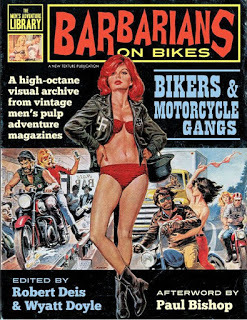 From that point to the mid-1970s, outlaw biker stories, covers, and interior artwork were a common feature of men’s adventure magazines. That artwork was being done by almost all of the best illustrators who worked for them, including Cohen, Künstler, Copeland, Eastman, Minney, Gogos, Pollen, Duillo, Norem, Saunders, and most of the other top professionals who created the bulk of the artwork for men’s pulp adventure magazines as well as for thousands of mid-20th century adventure, crime, and Western paperbacks. In general, most of the biker artwork they did depicted the vicious, violent outlaw bikers partying and pillaging their way through the world (though some involved good guys on motorcycles battling Nazis, Commies or outlaw bikers). Anyway, in the ‘60s and ‘70s, hundreds of issues of men’s adventure magazines featured biker stories and illustrations. So many, that bikers actually eclipsed Nazis as the most common bad guys featured in men’s adventure magazines. From about 1970 to 1976, the final years of the MAMgenre, cover paintings and interior artwork were increasingly replaced by photos. But, as we show, there was still some outstanding biker artwork in men’s adventure mags published in the mid-1970s. By then, biker covers were more common than even Nazi covers on the low-budget sweat mags, and some of the mid-tier Magazine Management mags still had very cool biker art by their old stalwarts, like Samson Pollen and Bruce Minney. Do you have a favorite cover in the collection or one cover you would say is representative of the genre? Bob: Actually, I think the interior illustrations shown in our book are often even cooler than the covers, even though most were either black and white or two-color duotone paintings. But among the covers, I’d have to say the Earl Norem painting we used for the paperback edition of our book is probably my fave, followed closely by the Norem painting we used on the hardcover edition. And, the scenes of bikers running amok are pretty representative of what many of the biker stories and artwork are like. Wyatt: Bob makes a good point about not overlooking the interiors. A cover painting needs to have immediate impact and appeal, something the viewer can process in an instant. That’s cover artwork’s job, to make you pick up the magazine. But once inside, the editors felt freer to get wilder and expand their horizons—literally! There’s just something about the widescreen frame of a two-page spread that lent itself particularly well to this subject, and inspired artists to go all-out. It’s impossible to pick a favorite, but I really go for the inventive compositions of Earl Norem (to whom we dedicated the book), and the comin’-at-ya action of Samson Pollen. Those artists in particular brought something fresh and exciting to every piece. They had a real facility for scenes of biker mayhem that put the reader square in the middle of every fight, race, and escape. So if I have to choose favorites, they’d be Norem’s Cycle Loners Who Beat Tennessee’s Outlaw Angels (probably the most action-packed piece in the book—you can practically hear the crunch of destruction) and Pollen’s Cycle Nymph(luxurious cheesecake and cycle action). Pollen’s mastery of the widescreen frame is really something. Are you considering a future collection of the outlaw biker stories that accompanied the covers displayed in Barbarians on Bikes? Bob: Yes, it’s already in the planning stages. It will probably be among the first examples of another new type of book we’re adding to the Men’s Adventure Library series: a journal format that will serve as a sort of hybrid of our story anthologies and our art-focused books. We’ll debut the first books in that format next year. What are the extras included in the deluxe hardcover edition of Barbarians on Bikes?
From that point to the mid-1970s, outlaw biker stories, covers, and interior artwork were a common feature of men’s adventure magazines. That artwork was being done by almost all of the best illustrators who worked for them, including Cohen, Künstler, Copeland, Eastman, Minney, Gogos, Pollen, Duillo, Norem, Saunders, and most of the other top professionals who created the bulk of the artwork for men’s pulp adventure magazines as well as for thousands of mid-20th century adventure, crime, and Western paperbacks. In general, most of the biker artwork they did depicted the vicious, violent outlaw bikers partying and pillaging their way through the world (though some involved good guys on motorcycles battling Nazis, Commies or outlaw bikers). Anyway, in the ‘60s and ‘70s, hundreds of issues of men’s adventure magazines featured biker stories and illustrations. So many, that bikers actually eclipsed Nazis as the most common bad guys featured in men’s adventure magazines. From about 1970 to 1976, the final years of the MAMgenre, cover paintings and interior artwork were increasingly replaced by photos. But, as we show, there was still some outstanding biker artwork in men’s adventure mags published in the mid-1970s. By then, biker covers were more common than even Nazi covers on the low-budget sweat mags, and some of the mid-tier Magazine Management mags still had very cool biker art by their old stalwarts, like Samson Pollen and Bruce Minney. Do you have a favorite cover in the collection or one cover you would say is representative of the genre? Bob: Actually, I think the interior illustrations shown in our book are often even cooler than the covers, even though most were either black and white or two-color duotone paintings. But among the covers, I’d have to say the Earl Norem painting we used for the paperback edition of our book is probably my fave, followed closely by the Norem painting we used on the hardcover edition. And, the scenes of bikers running amok are pretty representative of what many of the biker stories and artwork are like. Wyatt: Bob makes a good point about not overlooking the interiors. A cover painting needs to have immediate impact and appeal, something the viewer can process in an instant. That’s cover artwork’s job, to make you pick up the magazine. But once inside, the editors felt freer to get wilder and expand their horizons—literally! There’s just something about the widescreen frame of a two-page spread that lent itself particularly well to this subject, and inspired artists to go all-out. It’s impossible to pick a favorite, but I really go for the inventive compositions of Earl Norem (to whom we dedicated the book), and the comin’-at-ya action of Samson Pollen. Those artists in particular brought something fresh and exciting to every piece. They had a real facility for scenes of biker mayhem that put the reader square in the middle of every fight, race, and escape. So if I have to choose favorites, they’d be Norem’s Cycle Loners Who Beat Tennessee’s Outlaw Angels (probably the most action-packed piece in the book—you can practically hear the crunch of destruction) and Pollen’s Cycle Nymph(luxurious cheesecake and cycle action). Pollen’s mastery of the widescreen frame is really something. Are you considering a future collection of the outlaw biker stories that accompanied the covers displayed in Barbarians on Bikes? Bob: Yes, it’s already in the planning stages. It will probably be among the first examples of another new type of book we’re adding to the Men’s Adventure Library series: a journal format that will serve as a sort of hybrid of our story anthologies and our art-focused books. We’ll debut the first books in that format next year. What are the extras included in the deluxe hardcover edition of Barbarians on Bikes?
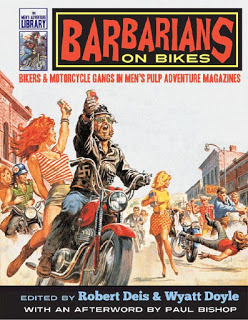 Wyatt: It was important that we deliver quality reproduction to satisfy the high standards of serious collectors, but connecting with new fans is a priority, too. So for the merely curious, there’s an affordable softcover; for the serious collector, there’s an expanded, deluxe hardcover edition. The deluxe hardcover uses archival paper and employs more expensive printing and binding. It includes 20 extra pages of additional images, and uses an alternate layout, spotlighting instances where artwork and stories were subsequently repurposed or reprinted, whether in a later issue, or in a different magazine from the same publisher. The softcover is a great introduction and an ideal overview for the casual fan. But pulp scholars, collectors, and those who already know how great this stuff is will find more to sink their teeth into with the deluxe hardcover. The Men’s Adventure Magazines Blog CLICK HEREis becoming more and more comprehensive. How did you come to start the blog and website, and how much effort does it take to maintain it? Bob: Well, in my own mind, it’s still far from comprehensive, but I plan to keep pecking away at it and making it more so in the years ahead. I started the blog back in 2009, about a year after I became an obsessive collector of men’s adventure magazines. I looked around the internet and discovered that there weren’t any sites specifically dedicated to men’s adventure mags at the time. Earlier in my life, I had done quite a bit of writing for magazines and in 2009, blogging was starting to become bigger and easier to do, so I decided to start the MensPulpMags.com blog. In the beginning, I did a post or two every week, but over the years, I began to focus more on our book projects and on posting in the Men’s Adventure Magazines Facebook group I created. So, the frequency of my posts on MensPulpMags.com has declined. And from July to mid-November, almost all of my free time was eaten up by an intense day-job project I agreed to take on to make some extra bucks. So, it wasn’t until recently that I started posting there again. Anyway, nowadays, the era of the sequential-post style blog seems to be waning. I am starting to rethink how to reorganize the site and add to it to make it fit the idea of something that is more comprehensive. For example, I’d like to create a series of anchor pages providing overviews of various men’s adventure magazines and artists. So, I’m not sure how much time that will take in the months ahead. I think doing frequent posts in my MAM Facebook group has kind of taken the place of frequent posting on MensPulpMags.com. I do posts there daily. And, there are now over 1,700 members in the group from all over the world who post things and comment. It has become a great place to share images and information with men’s adventure mag fans, and it’s quicker and easier to do Facebook posts.
Wyatt: It was important that we deliver quality reproduction to satisfy the high standards of serious collectors, but connecting with new fans is a priority, too. So for the merely curious, there’s an affordable softcover; for the serious collector, there’s an expanded, deluxe hardcover edition. The deluxe hardcover uses archival paper and employs more expensive printing and binding. It includes 20 extra pages of additional images, and uses an alternate layout, spotlighting instances where artwork and stories were subsequently repurposed or reprinted, whether in a later issue, or in a different magazine from the same publisher. The softcover is a great introduction and an ideal overview for the casual fan. But pulp scholars, collectors, and those who already know how great this stuff is will find more to sink their teeth into with the deluxe hardcover. The Men’s Adventure Magazines Blog CLICK HEREis becoming more and more comprehensive. How did you come to start the blog and website, and how much effort does it take to maintain it? Bob: Well, in my own mind, it’s still far from comprehensive, but I plan to keep pecking away at it and making it more so in the years ahead. I started the blog back in 2009, about a year after I became an obsessive collector of men’s adventure magazines. I looked around the internet and discovered that there weren’t any sites specifically dedicated to men’s adventure mags at the time. Earlier in my life, I had done quite a bit of writing for magazines and in 2009, blogging was starting to become bigger and easier to do, so I decided to start the MensPulpMags.com blog. In the beginning, I did a post or two every week, but over the years, I began to focus more on our book projects and on posting in the Men’s Adventure Magazines Facebook group I created. So, the frequency of my posts on MensPulpMags.com has declined. And from July to mid-November, almost all of my free time was eaten up by an intense day-job project I agreed to take on to make some extra bucks. So, it wasn’t until recently that I started posting there again. Anyway, nowadays, the era of the sequential-post style blog seems to be waning. I am starting to rethink how to reorganize the site and add to it to make it fit the idea of something that is more comprehensive. For example, I’d like to create a series of anchor pages providing overviews of various men’s adventure magazines and artists. So, I’m not sure how much time that will take in the months ahead. I think doing frequent posts in my MAM Facebook group has kind of taken the place of frequent posting on MensPulpMags.com. I do posts there daily. And, there are now over 1,700 members in the group from all over the world who post things and comment. It has become a great place to share images and information with men’s adventure mag fans, and it’s quicker and easier to do Facebook posts.
 What can we expect next from New Texture both in the field of men’s adventure magazines and in other areas? Bob: We’re not quite ready to announce all the details yet, but next year will be our biggest year yet in terms of the number of books we’ll be adding to the Men’s Adventure Library. We plan to launch the journal series I mentioned, as well as a collection of men’s adventure magazine stories written by the great Robert Silverberg. We plan to do some more themed, large-format visual archive art books along the lines of
Barbarians
on Bikes. Two we’re working on involve major celebrities in the realm of men’s adventure magazines, who recently gave us permission to do books that feature them.
What can we expect next from New Texture both in the field of men’s adventure magazines and in other areas? Bob: We’re not quite ready to announce all the details yet, but next year will be our biggest year yet in terms of the number of books we’ll be adding to the Men’s Adventure Library. We plan to launch the journal series I mentioned, as well as a collection of men’s adventure magazine stories written by the great Robert Silverberg. We plan to do some more themed, large-format visual archive art books along the lines of
Barbarians
on Bikes. Two we’re working on involve major celebrities in the realm of men’s adventure magazines, who recently gave us permission to do books that feature them.
 Wyatt: The emphasis at New Texture is on sideways autobiography and secret history, and working with Bob on Men’s Adventure Library releases always means plenty of both. Keep up with New Texture’s book and music releases at
www.NewTexture.com/
Wyatt: The emphasis at New Texture is on sideways autobiography and secret history, and working with Bob on Men’s Adventure Library releases always means plenty of both. Keep up with New Texture’s book and music releases at
www.NewTexture.com/
 Thanks to both Bob and Wyatt for taking the time to share their intimate knowledge and passion for men’s adventure magazines. And a special thanks for letting me be part of the final product…
Thanks to both Bob and Wyatt for taking the time to share their intimate knowledge and passion for men’s adventure magazines. And a special thanks for letting me be part of the final product…
Published on December 07, 2016 20:26
ESPIONAGE CORNER: SHAW...COMMANDER SHAW
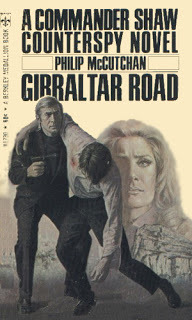
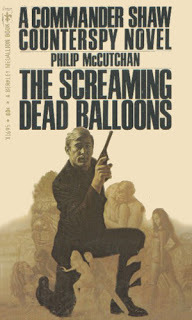 ESPIONAGE CORNER: SHAW...COMMANDER SHAW
ESPIONAGE CORNER: SHAW...COMMANDER SHAW
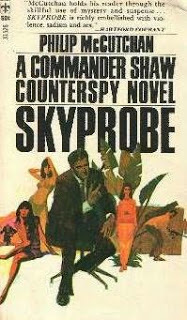 From 1960 to 1995, British Navy Commander Esmond Shaw carried out daring missions against larger than life villains as an agent of Britain’s shadowy Intelligence organization known as 6D2. While sharing the same rank as his much better known counterpart, Commander James Bond, Shaw deserves to be read and remembered in his own right. However, the novels detailing the adventures of the resourceful and debonair Shaw are definitely in the realm of Fleming’s spy fiction, as opposed to the darker espionage fiction of LeCarré.
From 1960 to 1995, British Navy Commander Esmond Shaw carried out daring missions against larger than life villains as an agent of Britain’s shadowy Intelligence organization known as 6D2. While sharing the same rank as his much better known counterpart, Commander James Bond, Shaw deserves to be read and remembered in his own right. However, the novels detailing the adventures of the resourceful and debonair Shaw are definitely in the realm of Fleming’s spy fiction, as opposed to the darker espionage fiction of LeCarré.
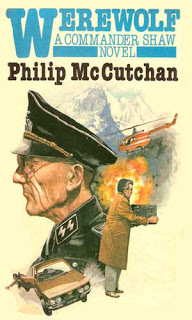 Shaw was the creation of prolific English author Philip McCutchan. After having served on various British war ships during WWII, McCutchan left the navy to concentrated on writing. During his career, he published more than 80 books, including fifteen books in his bestselling Halfhyde series of naval warfare adventures. In his first eight adventures, Shaw is assigned to the Special Services Division of Defence Intelligence. He’s the Admiralty’s go-to guy when action is need off the decks of sea bound ships. Eventually, Shaw becomes disillusioned and comes in out of the cold and quits. The inevitable spiral into alcohol and blondes and debauched behavior is brought to a halt when he reluctantly is brought back into the fold by 6D2, a highly classified branch of British Intelligence.
Shaw was the creation of prolific English author Philip McCutchan. After having served on various British war ships during WWII, McCutchan left the navy to concentrated on writing. During his career, he published more than 80 books, including fifteen books in his bestselling Halfhyde series of naval warfare adventures. In his first eight adventures, Shaw is assigned to the Special Services Division of Defence Intelligence. He’s the Admiralty’s go-to guy when action is need off the decks of sea bound ships. Eventually, Shaw becomes disillusioned and comes in out of the cold and quits. The inevitable spiral into alcohol and blondes and debauched behavior is brought to a halt when he reluctantly is brought back into the fold by 6D2, a highly classified branch of British Intelligence.
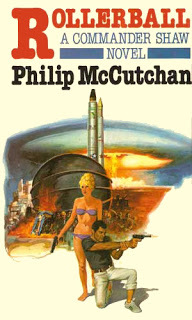 In Sunstrike, the 14th Shaw novel, Felicity Mandrake is assigned as Shaw’s secretary. Unlike, Bond’s Moneypenny (at least in the books), Felicity becomes Shaw’s partner, working alongside him in the field for the rest of the series. Shaw’s adversaries run the gamut of colorful (if standard) villains from Russian spies to fanatical terrorists both domestic and international. Shaw even had his own international criminal cartel to rival Specter, SMERSH, or THRUSH. The oddly initialed WUSWIPP—World Union of Socialist Scientific Workers for International Progress in Peace—like every other organization of their ilk was dedicated to total world domination through any nefarious plots, weapons of mass destructions, or government downfalls necessary.
In Sunstrike, the 14th Shaw novel, Felicity Mandrake is assigned as Shaw’s secretary. Unlike, Bond’s Moneypenny (at least in the books), Felicity becomes Shaw’s partner, working alongside him in the field for the rest of the series. Shaw’s adversaries run the gamut of colorful (if standard) villains from Russian spies to fanatical terrorists both domestic and international. Shaw even had his own international criminal cartel to rival Specter, SMERSH, or THRUSH. The oddly initialed WUSWIPP—World Union of Socialist Scientific Workers for International Progress in Peace—like every other organization of their ilk was dedicated to total world domination through any nefarious plots, weapons of mass destructions, or government downfalls necessary.
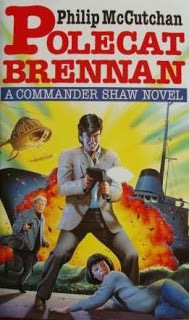 McCutchan’s terrific James Ogilvie series (favorably comparable in my opinion to Bernard Cornwell’s series featuring Richard Sharpe), his Donald Cameron naval thrillers, and his critically acclaimed Halfhyde Adventures (comparable to the naval adventures written by Douglas Reeman’s) are all currently available in e-book format. Unfortunately, his Commander Shaw series has not as yet received the same opportunity to find a new audience. This is a definite shame as the Shaw books are well written, capture the spy fiction of their time period perfectly, and deserve to be rediscovered. COMMANDER SHAW COUNTER SPY SERIES #1 Gibraltar Road (1960) #2 Red Cap (1961) #3 Bluebolt One (1962) #4 The Man from Moscow (1963) #5 Warmaster (1963) #6 Moscow Coach (1964) #7 The Dead Line (1966) #8 Skyprobe (1966) #9 The Screaming Dead Balloons (1968) #10 The Bright Red Businessman (1969) #11 The All-Purpose Bodies (1969) #12 Hartinger's Mouse (1970) #13 This Drakotny (1971) #14 Sunstrike (1973) #15 Corpse (1980) #16 Werewolf (1982) #17 Rollerball (1983) #18 Greenfly (1987) #19 The Boy Who Liked Monsters (1989) #20 The Spatchcock Plan (1990) #21 Polecat Brennan (1994) #22 Burn-Out (1995) CLICK HERE TO FIND OUT MORE ABOUT THE COMMANDER SHAW SERIES CHECK OUT THE SPY GUYS AND GALS WEBSITE
McCutchan’s terrific James Ogilvie series (favorably comparable in my opinion to Bernard Cornwell’s series featuring Richard Sharpe), his Donald Cameron naval thrillers, and his critically acclaimed Halfhyde Adventures (comparable to the naval adventures written by Douglas Reeman’s) are all currently available in e-book format. Unfortunately, his Commander Shaw series has not as yet received the same opportunity to find a new audience. This is a definite shame as the Shaw books are well written, capture the spy fiction of their time period perfectly, and deserve to be rediscovered. COMMANDER SHAW COUNTER SPY SERIES #1 Gibraltar Road (1960) #2 Red Cap (1961) #3 Bluebolt One (1962) #4 The Man from Moscow (1963) #5 Warmaster (1963) #6 Moscow Coach (1964) #7 The Dead Line (1966) #8 Skyprobe (1966) #9 The Screaming Dead Balloons (1968) #10 The Bright Red Businessman (1969) #11 The All-Purpose Bodies (1969) #12 Hartinger's Mouse (1970) #13 This Drakotny (1971) #14 Sunstrike (1973) #15 Corpse (1980) #16 Werewolf (1982) #17 Rollerball (1983) #18 Greenfly (1987) #19 The Boy Who Liked Monsters (1989) #20 The Spatchcock Plan (1990) #21 Polecat Brennan (1994) #22 Burn-Out (1995) CLICK HERE TO FIND OUT MORE ABOUT THE COMMANDER SHAW SERIES CHECK OUT THE SPY GUYS AND GALS WEBSITE
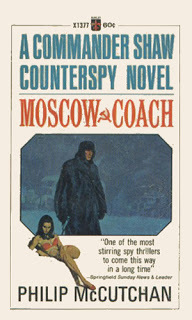
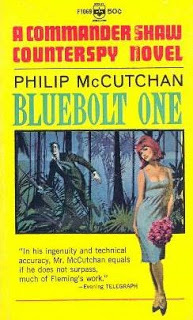
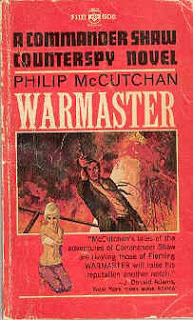
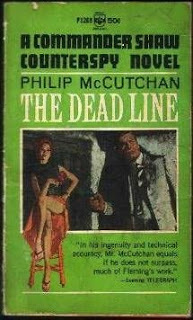
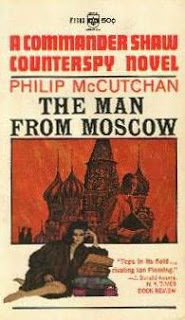
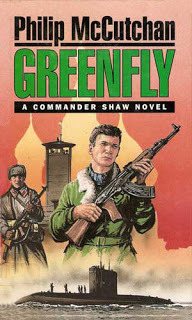
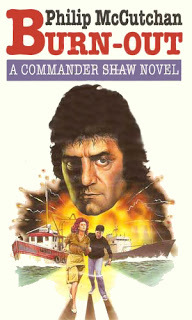
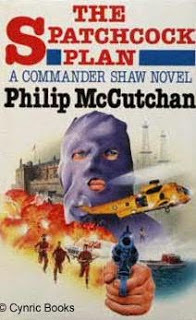
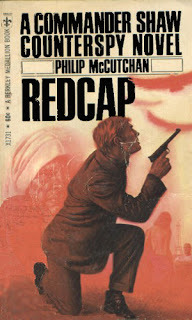
Published on December 07, 2016 13:17
November 30, 2016
PICCADILLY COWBOYS ~ THE GRINGOS
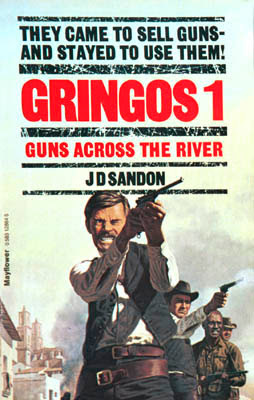
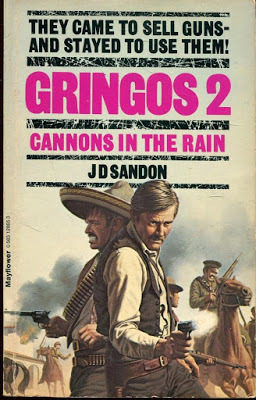 PICCADILLY COWBOYS ~ THE GRINGOS
*The first in an occasional series of posts looking at the Piccadilly Cowboy westerns…
PICCADILLY COWBOYS ~ THE GRINGOS
*The first in an occasional series of posts looking at the Piccadilly Cowboy westerns…
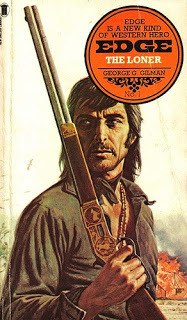 They rode out of a dark and dangerous Piccadilly pub in the heart of ‘70s London. Seven deadly UK wordslingers with their battered typewriters tied down, ready to blast out paperbacks filled with violent, brutal, blistering action. They were set for a showdown against every tin star tradition of the western genre—and determined to shoot ‘em to dollrags. For the next decade, the gang known as The Piccadilly Cowboys would carve over three hundred notches on their combined typewriters—one for every hard, fast, ultra-violent tale they produced. Terry Harknett, Angus Wells, Kenneth Bulmer, Mike Linaker, Laurence James, Fred Nolan, and John
They rode out of a dark and dangerous Piccadilly pub in the heart of ‘70s London. Seven deadly UK wordslingers with their battered typewriters tied down, ready to blast out paperbacks filled with violent, brutal, blistering action. They were set for a showdown against every tin star tradition of the western genre—and determined to shoot ‘em to dollrags. For the next decade, the gang known as The Piccadilly Cowboys would carve over three hundred notches on their combined typewriters—one for every hard, fast, ultra-violent tale they produced. Terry Harknett, Angus Wells, Kenneth Bulmer, Mike Linaker, Laurence James, Fred Nolan, and John
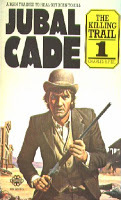 Harvey had never travelled west of London, yet their influence would save the western genre from obscurity. However, not everyone felt the means was being justified by the end. The old guard of the standard western—white-hatted, horse loving, damsel rescuers—reviled these blaggards who they believed were destroying their legacy.
Harvey had never travelled west of London, yet their influence would save the western genre from obscurity. However, not everyone felt the means was being justified by the end. The old guard of the standard western—white-hatted, horse loving, damsel rescuers—reviled these blaggards who they believed were destroying their legacy. 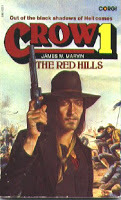 Using assumed identities—pseudonyms such as George Gilman (Terry Harknett), Frederick H. Christian (Fred Nolan), William M. James (Harknett, Lawrence James, John Harvey), James A. Muir/Mathew Kirk (Angus Wells), L. J. Coburn (James, Harvey), Neil Hunter (Mike Linaker), Charles R. Pike (Kenneth Bulmer), and many others—these desperate men found
Using assumed identities—pseudonyms such as George Gilman (Terry Harknett), Frederick H. Christian (Fred Nolan), William M. James (Harknett, Lawrence James, John Harvey), James A. Muir/Mathew Kirk (Angus Wells), L. J. Coburn (James, Harvey), Neil Hunter (Mike Linaker), Charles R. Pike (Kenneth Bulmer), and many others—these desperate men found
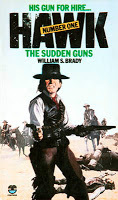 inspiration in the filmatic violence, heat, dust, and bloodshed of Sergio Leone’s spaghetti westerns. Together, they shunned the generic moral and puritanical principles of traditional westerns in favor of a blood-soaked, nihilistic, ultra-realism splash across their pages.
inspiration in the filmatic violence, heat, dust, and bloodshed of Sergio Leone’s spaghetti westerns. Together, they shunned the generic moral and puritanical principles of traditional westerns in favor of a blood-soaked, nihilistic, ultra-realism splash across their pages.The protagonists created by the Piccadilly Cowboys were not traditional anti-heroes, or even amoral drifters with their own personal code. They were brutal violent bullies, sociopathic villains, with no thought for anything beyond their own survival and the slaking of their depraved lusts—killing, vengeance, sadism, and prurient rutting.
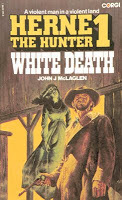 Edge (61 books), Adam Steele (49 books), Herne (24 books), Bodie (6 books), Apache (27 books), Caleb Thorne (5 books), Jubal Cade (22 books), The Undertaker (6 books), Angel (9 books), Hart (10 books), Breed (22 books), Claw (6 books), Hawk (15 books), Lawmen (six books), Crow—the worst of the bunch—(8 books), and a dozen or more other vicious series gunmen cemented the reputation of the Piccadilly Cowboys for creating The Most Violent Westerns In Print... Among the lesser known, but better written of these series, Gringos was co-authored by John Harvey (who would go on to critical success with his mainstream detective stories featuring Charlie Resnick) and the prolific Angus Wells under the pseudonym J. D. Sandon. The ten books in the Gringosseries began publication in 1972 with Guns across the River. The final book in the series—Survivors—was published in 1982. Set in the 1800s, the Gringoswere four hard violent men—Jonas Strong, who was damned by his color...Cade Onslow, a major who deserted the US Army in pursuit of vengeance…Jamie Durham, a junkie shunned by society due to his destroyed face...and Yates McCloud, a rapist described as headed straight to hell. Guns Across the Riverbegins with the Gringos entrusted with delivering guns to Pancho Villa—weapons he needs to defeat his hated rival, Zacatecas, and advance on Mexico City. Finding themselves in a trap, the Gringos must use the weapons themselves while putting together a rag-tag army of their own... GRINGOS #1: GUNS ACROSS THE RIVERANGUS WELLS (1979)
Edge (61 books), Adam Steele (49 books), Herne (24 books), Bodie (6 books), Apache (27 books), Caleb Thorne (5 books), Jubal Cade (22 books), The Undertaker (6 books), Angel (9 books), Hart (10 books), Breed (22 books), Claw (6 books), Hawk (15 books), Lawmen (six books), Crow—the worst of the bunch—(8 books), and a dozen or more other vicious series gunmen cemented the reputation of the Piccadilly Cowboys for creating The Most Violent Westerns In Print... Among the lesser known, but better written of these series, Gringos was co-authored by John Harvey (who would go on to critical success with his mainstream detective stories featuring Charlie Resnick) and the prolific Angus Wells under the pseudonym J. D. Sandon. The ten books in the Gringosseries began publication in 1972 with Guns across the River. The final book in the series—Survivors—was published in 1982. Set in the 1800s, the Gringoswere four hard violent men—Jonas Strong, who was damned by his color...Cade Onslow, a major who deserted the US Army in pursuit of vengeance…Jamie Durham, a junkie shunned by society due to his destroyed face...and Yates McCloud, a rapist described as headed straight to hell. Guns Across the Riverbegins with the Gringos entrusted with delivering guns to Pancho Villa—weapons he needs to defeat his hated rival, Zacatecas, and advance on Mexico City. Finding themselves in a trap, the Gringos must use the weapons themselves while putting together a rag-tag army of their own... GRINGOS #1: GUNS ACROSS THE RIVERANGUS WELLS (1979)
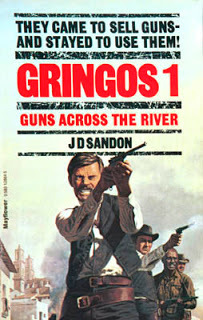 They Came To Sell Guns—And Stayed To Use Them ~ The Mexican Revolution—when death rode on a razor’s edge and life hung on the hammer of a colt automatic. Cade Onslow: US Army Major. Deserter, with nothing to gain but vengeance. Jonas Strong: Top Sergeant, damned by his color. Yates McCloud: Rapist. Nowhere to go but hell. Jamie Durham: The needle of morphine was the answer to his ruined face. The Gringos—four men with nothing to lose but their lives. And they didn’t count for much in the blood fury of rebellion. GRINGOS #2: CANNONS IN THE RAINJOHN HARVEY (1979)
They Came To Sell Guns—And Stayed To Use Them ~ The Mexican Revolution—when death rode on a razor’s edge and life hung on the hammer of a colt automatic. Cade Onslow: US Army Major. Deserter, with nothing to gain but vengeance. Jonas Strong: Top Sergeant, damned by his color. Yates McCloud: Rapist. Nowhere to go but hell. Jamie Durham: The needle of morphine was the answer to his ruined face. The Gringos—four men with nothing to lose but their lives. And they didn’t count for much in the blood fury of rebellion. GRINGOS #2: CANNONS IN THE RAINJOHN HARVEY (1979)
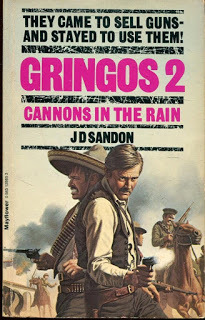 Money Was All They Wanted—Death, All They Expected ~ When the consignment of illegal arms the Gringos were shipping south to the Mexican rebels was blown out of the water, they were forced to go back to Zapata empty-handed. Emiliano Zapata, the deadliest rebel of them all. He could have had them killed on the spot—Instead he held one of them hostage and sent the others to hi-jack a government arms train. They all knew what would happen if they failed, but failure wasn’t a word the Gringos knew. Even if they had to blast and shoot their way through the hell that was Mexico to prove it! GRINGOS #3: FIRE IN THE WINDANGUS WELLS (1979)
Money Was All They Wanted—Death, All They Expected ~ When the consignment of illegal arms the Gringos were shipping south to the Mexican rebels was blown out of the water, they were forced to go back to Zapata empty-handed. Emiliano Zapata, the deadliest rebel of them all. He could have had them killed on the spot—Instead he held one of them hostage and sent the others to hi-jack a government arms train. They all knew what would happen if they failed, but failure wasn’t a word the Gringos knew. Even if they had to blast and shoot their way through the hell that was Mexico to prove it! GRINGOS #3: FIRE IN THE WINDANGUS WELLS (1979)
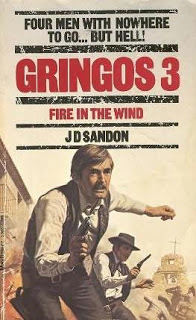 Three Men With Nowhere To Go But Hell ~ Mexico 1914. The revolution was in full, bloody spate. Zapata held the south. Pancho Villa held the north. Mexico City was caught in the pincer grip of the rebel armies. But in Reynosa there was an answer to the Government’s siege in the form of enough explosive to blast the rebels to hell. And a way to deliver it—a bi-plane. It was a new way of making war, a way to deliver death from the sky. The Gringos met it the only way they knew how...With bullets and blood. GRINGOS #4: BORDER AFFAIRJOHN HARVEY (1979)
Three Men With Nowhere To Go But Hell ~ Mexico 1914. The revolution was in full, bloody spate. Zapata held the south. Pancho Villa held the north. Mexico City was caught in the pincer grip of the rebel armies. But in Reynosa there was an answer to the Government’s siege in the form of enough explosive to blast the rebels to hell. And a way to deliver it—a bi-plane. It was a new way of making war, a way to deliver death from the sky. The Gringos met it the only way they knew how...With bullets and blood. GRINGOS #4: BORDER AFFAIRJOHN HARVEY (1979)
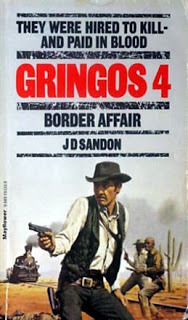 They Were Hired To Kill—And Paid In Blood ~ It should have been easy—collect a shipment of arms in El Paso and run them south of the border to the rebel bandit, Pancho Villa. But in the blood and darkness of revolution nothing is as easy as it seems. Betrayed on all sides, the leader of the Gringos feels the raw rope of a hangman’s noose around his neck. It takes the other Gringos all their furious courage and firepower to save him—except none of them can ever be saved. GRINGOS #5: EASY MONEYANGUS WELLS (1980)
They Were Hired To Kill—And Paid In Blood ~ It should have been easy—collect a shipment of arms in El Paso and run them south of the border to the rebel bandit, Pancho Villa. But in the blood and darkness of revolution nothing is as easy as it seems. Betrayed on all sides, the leader of the Gringos feels the raw rope of a hangman’s noose around his neck. It takes the other Gringos all their furious courage and firepower to save him—except none of them can ever be saved. GRINGOS #5: EASY MONEYANGUS WELLS (1980)
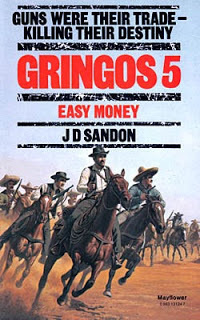 Guns Were Their Trade—Killing Their Destiny ~ Zacatecas was the stumbling block that barred Pancho Villa’s advance on Mexico City. The Federale garrison was fighting his bandit army to a standstill. But word came of howitzers stored in Tampico, and Villa called on the four men he trusted most to bring him guns—The Gringos. What they didn’t know was that the whole deal was a trap—an elaborate plan to destroy them. And when the jaws swung shut, they were left to escape the way they knew best—by fighting clear! GRINGOS #6: MAZATLÁNJOHN HARVEY (1980)
Guns Were Their Trade—Killing Their Destiny ~ Zacatecas was the stumbling block that barred Pancho Villa’s advance on Mexico City. The Federale garrison was fighting his bandit army to a standstill. But word came of howitzers stored in Tampico, and Villa called on the four men he trusted most to bring him guns—The Gringos. What they didn’t know was that the whole deal was a trap—an elaborate plan to destroy them. And when the jaws swung shut, they were left to escape the way they knew best—by fighting clear! GRINGOS #6: MAZATLÁNJOHN HARVEY (1980)
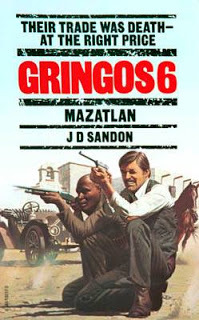 Their Trade Was Death—At The Right Price ~ When Yates McCloud tried to rape the Mexican’s woman, he forgot about revolutionary justice. And Mexican pride. Pancho Villa needed reliable men to help a bandito take the bank at Mazatlán—The Gringos were chosen. What they didn’t know was that a vengeance-bent killer was dogging their trail. Or that the ruthless outlaws they were forced to work with planned a double-cross. But The Gringos had their own answer to betrayal. The answer was spelled...death. With the word painted in blood. GRINGOS #7: ONE TOO MANY MORNINGSANGUS WELLS (1981)
Their Trade Was Death—At The Right Price ~ When Yates McCloud tried to rape the Mexican’s woman, he forgot about revolutionary justice. And Mexican pride. Pancho Villa needed reliable men to help a bandito take the bank at Mazatlán—The Gringos were chosen. What they didn’t know was that a vengeance-bent killer was dogging their trail. Or that the ruthless outlaws they were forced to work with planned a double-cross. But The Gringos had their own answer to betrayal. The answer was spelled...death. With the word painted in blood. GRINGOS #7: ONE TOO MANY MORNINGSANGUS WELLS (1981)
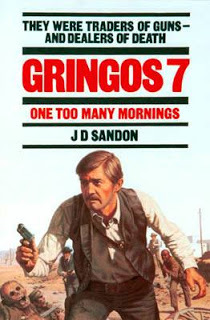 They Were Dealers In Guns—And Traders In Death ~ The prison was an impregnable fortress, the cells not fit for an animal, let alone a man. Death would have been a kindness for Oveda as neither escape nor rescue were possible. But Oveda’s freedom was vital to the cause of the Mexican Revolution. And for enough money, the Gringos would attempt even the impossible...The Gringos—four desperate Americans on the wrong side of the border, and the wrong side of the law. Fighting was all they had learned from life. Money was all they wanted. Death all they expected. GRINGOS #8: WHEELS OF THUNDERJOHN HARVEY (1981)
They Were Dealers In Guns—And Traders In Death ~ The prison was an impregnable fortress, the cells not fit for an animal, let alone a man. Death would have been a kindness for Oveda as neither escape nor rescue were possible. But Oveda’s freedom was vital to the cause of the Mexican Revolution. And for enough money, the Gringos would attempt even the impossible...The Gringos—four desperate Americans on the wrong side of the border, and the wrong side of the law. Fighting was all they had learned from life. Money was all they wanted. Death all they expected. GRINGOS #8: WHEELS OF THUNDERJOHN HARVEY (1981)
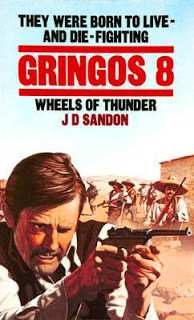 They Were Born To Live—And Die—Fighting ~ When Mexican revolutionary Pancho Villa swore to bring his people out of slavery and into the 20th Century, he didn’t reckon on having a Hollywood film crew in on the action. But now it is the price he must pay for the guns and ammunition he needs to fight the most savage battle of the war, and for the services of the men who will get them—The Gringos. The four hardest hombres south of the Rio Grande. GRINGOS #9: DURANGOJOHN HARVEY (1982)
They Were Born To Live—And Die—Fighting ~ When Mexican revolutionary Pancho Villa swore to bring his people out of slavery and into the 20th Century, he didn’t reckon on having a Hollywood film crew in on the action. But now it is the price he must pay for the guns and ammunition he needs to fight the most savage battle of the war, and for the services of the men who will get them—The Gringos. The four hardest hombres south of the Rio Grande. GRINGOS #9: DURANGOJOHN HARVEY (1982)
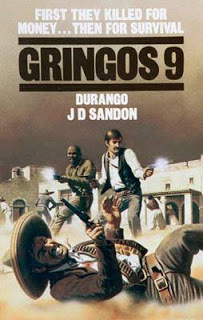 First They Killed For Money—Then For Survival ~ As the Revolutionary war in Mexico builds to a savage climax, the Gringos face their sternest test. In a welter of blood and a hail of death-dealing lead, they must avert the most vicious and cunning plot yet to rob the people of their chance of freedom. The Gringos—four men on the wrong side of the border, the wrong side of the law, and only just on the right side of Hell. GRINGOS #10: SURVIVORSANGUS WELLS (1982)
First They Killed For Money—Then For Survival ~ As the Revolutionary war in Mexico builds to a savage climax, the Gringos face their sternest test. In a welter of blood and a hail of death-dealing lead, they must avert the most vicious and cunning plot yet to rob the people of their chance of freedom. The Gringos—four men on the wrong side of the border, the wrong side of the law, and only just on the right side of Hell. GRINGOS #10: SURVIVORSANGUS WELLS (1982)
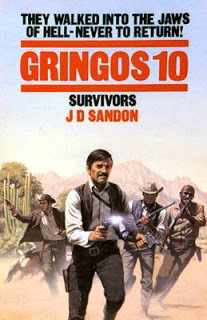 They Walked Into The Jaws Of Hell—Never To Return ~ The revolution was sapping the life from the suffering people of Mexico. Los Gringos filled the gap with the two things they did best—fighting and killing. Guns and money were enough to satisfy their crude appetites, but to get them, they first had to battle with some of the most vicious enemies the world had seen. And for The Gringos—four desperate men on a journey through red hell—there is no survival without blood on their hands and the ashen taste of death on their tongues. While many of the Piccadilly Cowboy western series can still be found as used paperbacks (or in new e-book formats on Amazon from Piccadilly Publishing), trying to put together a full set of the Gringos series in good condition is both relatively difficult and pricey. However, the stories are worth the effort to track down if these types of westerns work for you...
They Walked Into The Jaws Of Hell—Never To Return ~ The revolution was sapping the life from the suffering people of Mexico. Los Gringos filled the gap with the two things they did best—fighting and killing. Guns and money were enough to satisfy their crude appetites, but to get them, they first had to battle with some of the most vicious enemies the world had seen. And for The Gringos—four desperate men on a journey through red hell—there is no survival without blood on their hands and the ashen taste of death on their tongues. While many of the Piccadilly Cowboy western series can still be found as used paperbacks (or in new e-book formats on Amazon from Piccadilly Publishing), trying to put together a full set of the Gringos series in good condition is both relatively difficult and pricey. However, the stories are worth the effort to track down if these types of westerns work for you...
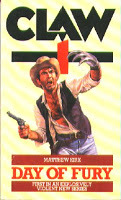
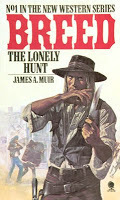
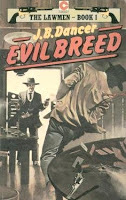
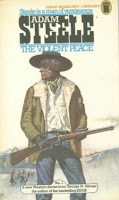
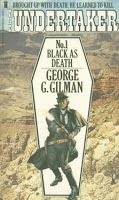
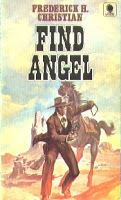
Published on November 30, 2016 13:28
November 29, 2016
QUEENSBERRY JUSTICE: THE FIGHT CARD SHERLOCK HOLMES OMNIBUS

QUEENSBERRY JUSTICE: THE FIGHT CARD SHERLOCK HOLMES OMNIBUS
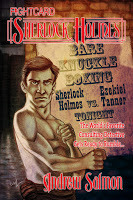 In 2013 Fight Card Books added a bold, new chapter to the rich literary tradition of Sherlock Holmes with the publication of the first Fight Card Sherlock Holmes tale, Work Capitol. The book was an instant hit with not only readers and critics, but also hardcore Sherlockians—who hailed Fight Card Sherlock Holmes: Work Capitol as a brilliant addition to the Sherlock Holmes canon…
In 2013 Fight Card Books added a bold, new chapter to the rich literary tradition of Sherlock Holmes with the publication of the first Fight Card Sherlock Holmes tale, Work Capitol. The book was an instant hit with not only readers and critics, but also hardcore Sherlockians—who hailed Fight Card Sherlock Holmes: Work Capitol as a brilliant addition to the Sherlock Holmes canon…
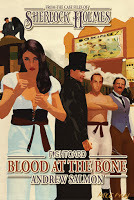 Two more Fight Card Sherlock Holmes novels followed, receiving the same critical acclaim...Fight Card Sherlock Holmes: Blood To The Bone and Fight Card Sherlock Holmes: A Congression Of Pallbearers both continued the dramatic, two-fisted action as Holmes honed his fighting skills both in and out of the boxing ring... Original, canonically tied, and completely Sherlockian all three tales have now been collected for the first time in one action-packed volume—Queensberry Justice: The Fight Card Sherlock Holmes Omnibus...
Two more Fight Card Sherlock Holmes novels followed, receiving the same critical acclaim...Fight Card Sherlock Holmes: Blood To The Bone and Fight Card Sherlock Holmes: A Congression Of Pallbearers both continued the dramatic, two-fisted action as Holmes honed his fighting skills both in and out of the boxing ring... Original, canonically tied, and completely Sherlockian all three tales have now been collected for the first time in one action-packed volume—Queensberry Justice: The Fight Card Sherlock Holmes Omnibus...
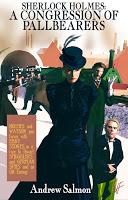 Exclusive additions to the collection include three brand new Fight Card Sherlock Holmes short stories...A foreword by Paul Bishop, the co-creator of the Fight Card series...A new introduction by Fight Card Sherlock Holmes author Andrew Salmon...Cover galleries for all three books created by illustrators Mike Fyles and Carl Yonder...Sample pages from the handwritten manuscripts...An alternate version of one of the trilogy's most dramatic scenes…Original articles on Victorian boxing and the role of Sherlock Holmes...And much more…
Exclusive additions to the collection include three brand new Fight Card Sherlock Holmes short stories...A foreword by Paul Bishop, the co-creator of the Fight Card series...A new introduction by Fight Card Sherlock Holmes author Andrew Salmon...Cover galleries for all three books created by illustrators Mike Fyles and Carl Yonder...Sample pages from the handwritten manuscripts...An alternate version of one of the trilogy's most dramatic scenes…Original articles on Victorian boxing and the role of Sherlock Holmes...And much more…
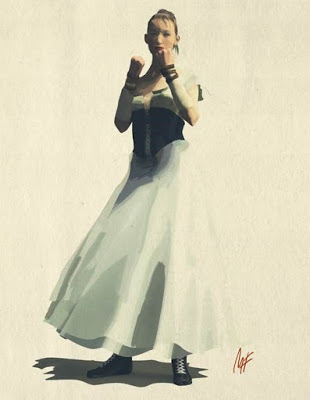 Available now in e-book for $9.99…Soon to appear in a $20.00 trade paperback…
Available now in e-book for $9.99…Soon to appear in a $20.00 trade paperback…
Published on November 29, 2016 23:40
RANDOM MOVIE AND TV REVIEWS
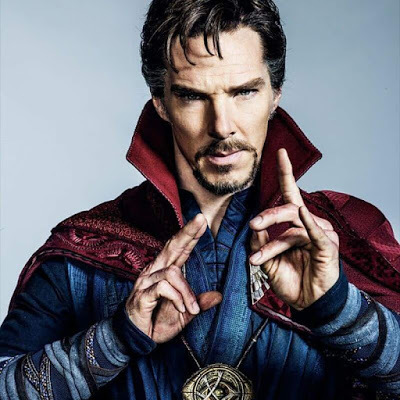 RANDOM MOVIE AND TV REVIEWS
RANDOM MOVIE AND TV REVIEWS
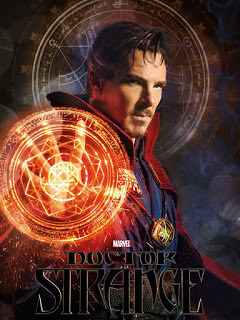 DR. STRANGE Doctor Strange is fantastic...All round mind blowing from casting to story to effects to soundtrack...Go see now...And then there's the cape...Totally cool...Want one now... ARRIVAL The tag line of this critically lauded 'thinking man's' sci-fi movie is, Why
DR. STRANGE Doctor Strange is fantastic...All round mind blowing from casting to story to effects to soundtrack...Go see now...And then there's the cape...Totally cool...Want one now... ARRIVAL The tag line of this critically lauded 'thinking man's' sci-fi movie is, Why 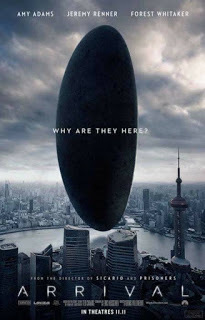
Are They Here? After two hours of painfully slow exposition and a whole lot of long silent walking, driving, and going up and down on the elevator thingy, my question was, Who Cares Why They Here?...And finally, They Came All The Way Here Just For That?...I'm in the minority opinion regarding this film...A lot of people have liked and loved it...But when I ask them to explain it all I get is a blank look...The emperor has no clothes...
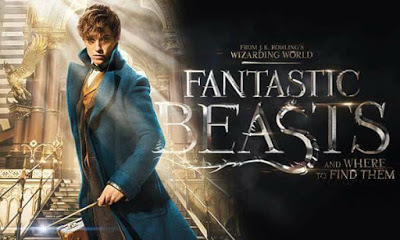 FANTASTIC BEASTS AND WHERE TO FIND THEM I had a great time with Fantastic Beasts And Where To Find Them...A total palette cleanser after the foul taste left by Arrival...Fun, inventive, and fully realized...More please... ALLIED
FANTASTIC BEASTS AND WHERE TO FIND THEM I had a great time with Fantastic Beasts And Where To Find Them...A total palette cleanser after the foul taste left by Arrival...Fun, inventive, and fully realized...More please... ALLIED
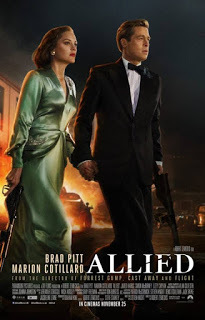 I wasn't overwhelmed, but I did enjoy Allied...However, it is a perfect example of a movie trailer hurting the film it's promoting by giving away every plot twist...As a result you sit in the theater twiddling your fingers while going through the build up to get to the plot points you've already seen in the trailer...I also think the film was hurt by its strictly linear storytelling, filled with time jumps (One Year Later...Three Years Later) in an effort to get to all the tension filled stuff to come after the big plot twist (already given away in the trailer)...The movie should have started with the plot twist and then portioned out the backstory through the rest of the film...Again, I enjoyed Allied and recommend it, but with some reservations...
I wasn't overwhelmed, but I did enjoy Allied...However, it is a perfect example of a movie trailer hurting the film it's promoting by giving away every plot twist...As a result you sit in the theater twiddling your fingers while going through the build up to get to the plot points you've already seen in the trailer...I also think the film was hurt by its strictly linear storytelling, filled with time jumps (One Year Later...Three Years Later) in an effort to get to all the tension filled stuff to come after the big plot twist (already given away in the trailer)...The movie should have started with the plot twist and then portioned out the backstory through the rest of the film...Again, I enjoyed Allied and recommend it, but with some reservations...
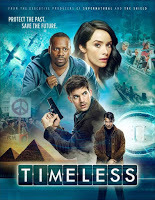 TIMELESS Adding one television show to this list...I'm enjoying Timeless...Each week I get pulled in by the time period, which helps me deal with the inherent basic plot of each episode...I'm hoping the show runners have figured out where they are taking the sequential storyline...Best new show of the season IMHO...
TIMELESS Adding one television show to this list...I'm enjoying Timeless...Each week I get pulled in by the time period, which helps me deal with the inherent basic plot of each episode...I'm hoping the show runners have figured out where they are taking the sequential storyline...Best new show of the season IMHO...
Published on November 29, 2016 23:19



